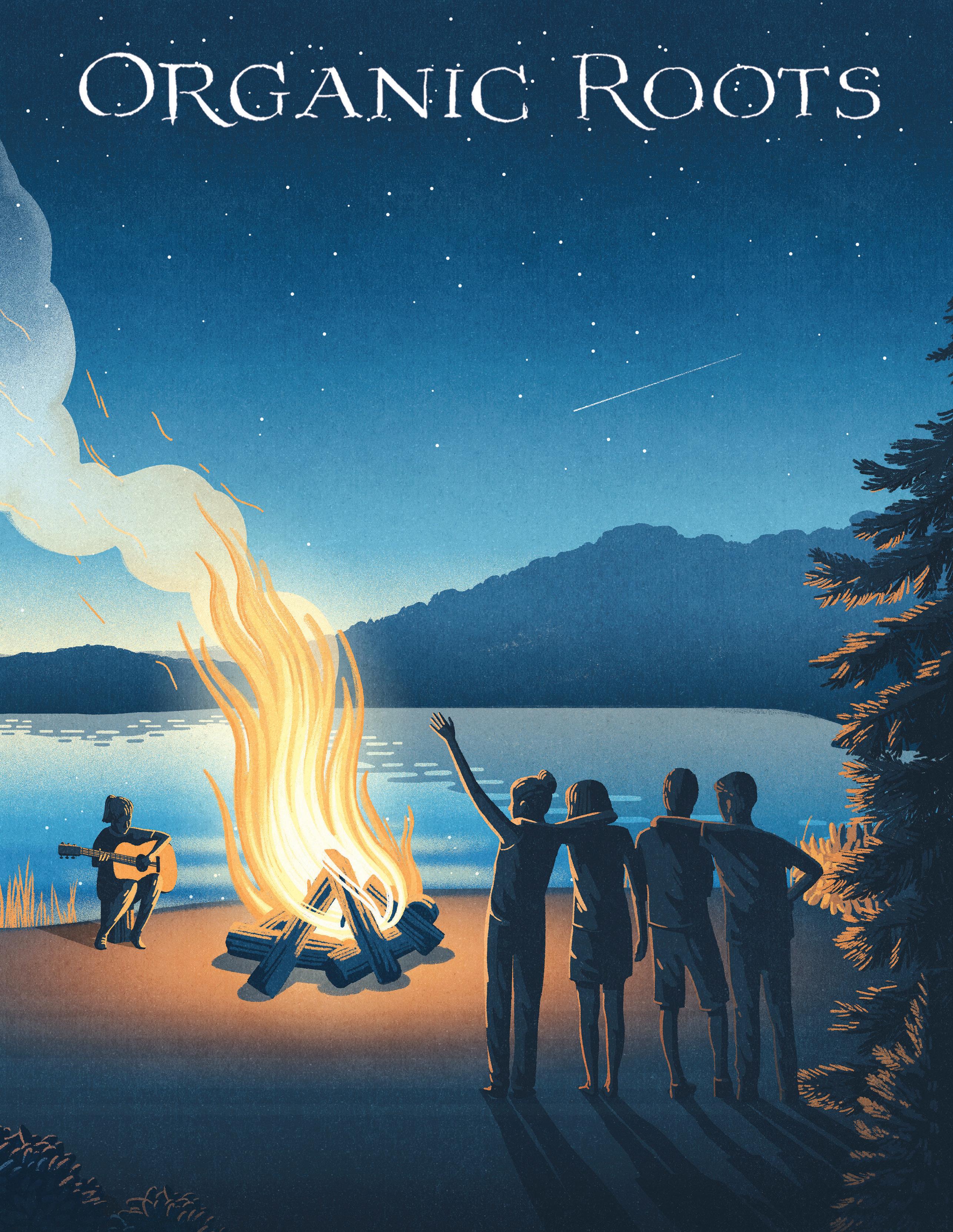
A Publication of North
SUMMER 2021
Country School and Camp Treetops
EDITOR-IN-CHIEF
Emilie Allen
EDITOR
Shaun Kittle
LAYOUT & DESIGN
Kelly Hofschneider
MASTHEAD
Gail Brill Designs
COVER ILLUSTRATION
Myriam Wares
CONTRIBUTORS
Emilie Allen
Christie Borden
Karen Culpepper
Katie Culpepper
Emily Eisman
Yves Jean
Shaun Kittle
Liz Lastowski
Becca Miller
Joel Oke
Todd Ormiston
Mara Frankel Wallace
PHOTOGRAPHERS
Nancie Battaglia
Erica Burns
Shaun Kittle
Becca Miller
ILLUSTRATORS
Gavi Mallory
Abby VanMuijen
COPY EDITING
Laura Ward
PRINTING
Print Management Pittsburgh, PA contact: eallen@ncstreetops.org
www.northcountryschool.org
www.camptreetops.org
www.rock-e.org
BOARD LEADERSHIP
Barkley Stuart, Chair
CTT 69–72, parent 03–07, NCS parent 09–11
Pamela Rosenthal, Vice-Chair NCS parent 07–09
TRUSTEES
Lisa Beck CTT 70–73, parent 05–16, staff 08–present
Ed Biddle CTT parent 01–08, 10–12
Ami Brabson NCS parent 16–18
Barry Breeman NCS parent 07–10, CTT parent 10–13
Peter Brest CTT 56–62, parent 93–06
Nick Hewitt NCS 65–70, CTT 64
Carla von Trapp Hunter NCS 95–96
Roger Loud CTT 42–48, parent 71–95, staff 54–63, 70–80 NCS parent 70–96, faculty 70–92
Greg Marchildon NCS 75–80, parent 12–13, CTT 74–79, parent 08–12, 14–15, CTT and NCS staff
Jennifer H. Maslow NCS faculty 82–85, CTT staff 82–85, parent 10
Davlyn Grant Mosley
CTT 96–98, staff 04
Stefan Nowicki
CTT 87–91, 93, staff 97–03, 06, 11
Robert Parker CTT parent 92–04
Pat Kramon Pincus
CTT 58–62, parent 90–98
Skye Raiser
NCS parent 20–present
Matt Salinger
NCS 72–74, CTT parent 04–08
David Stewart
NCS 92–94, CTT 95–96

Mara Frankel Wallace
CTT 77–80, parent 14–15
ORGANIC ROOTS I SUMMER 2021
Matthew Tuck, Treasurer NCS 75–78
Laura Harris, Secretary
NCS parent 91–95, CTT parent 93–99
Emanuel Weintraub
CTT 73–81, staff 85–87, parent 11–present
HONORARY TRUSTEES
Joan Davidson
CTT 38, staff 46, parent 62–72, grandparent 98–04, NCS staff 51–52
Colin Tait
CTT staff 54, 57, 67–82, CTT parent 67–78
Richard Wilde
CTT staff 60–82
TRUSTEES EMERITI
J. Matthew Davidson
CTT 62–67, parent 96–06
David Kenney
NCS parent 83–84, CTT parent 81–97
Rose Kean Lansbury
CTT parent 73–78, grandparent 99–01, 05–07, 10–present , NCS parent 73–82
Sandra Gray Nowicki
NCS 52–57, parent 83–84, CTT parent 79–93, NCS staff 67–12, CTT staff 96–14
Sumner Parker
NCS 40–41, parent 77–82 CTT 37–40, parent 73–79, grandparent
2
CAMPTREETOPS.ORG I NORTHCOUNTRYSCHOOL.ORG 3 LEADING THOUGHTS 2 From Todd Ormiston Executive Director 4 From Karen Culpepper Camp Treetops Director NCS & TREETOPS TODAY 18 Access Wild Places 22 Recipe from the Children’s Garden 24 The Gift of Timeless Summers 28 #ThisWeekatNCS 32 A Tradition with Altitude 34 Graduation 2021 36 Balanced Rocks Circle 42 Trustee Transitions 48 Student Voices Joel Oke ORGANIC
SUMMER 2021 FEATURES 6 Rooted in Education Shaun Kittle
Celebrating Our Past ... Charting Our Future Q&A with Todd Ormiston by Mara Frankel Wallace (CTT 77–80, parent 14–15, trustee 17–present) 20 A Sweet Subject Becca Miller 30 The Show Must Go On 38 Everyone Here Has a Super Power Yves Jean (NCS 89) ALUMNAE/I BULLETIN 43 In Memoriam 44 News and Notes
ROOTS
12
Leading Thoughts
WHILE HIKING CASCADE MOUNTAIN this past spring, I stopped partway up, where the transition from winter to spring was most evident. Above me, the trees were still barren. Where I stood, the snowmelt had swollen the stream and spring flowers were making their way out of hibernation. Below me, the leaves were that vibrant green that only appears in the springtime. All the while, the birds migrating back to the North Country were singing their sweet springtime songs. As I observed all of this beauty, I thought about life cycles, resilience, and evolution. At North Country School and Camp Treetops, we are never far from nature, and our remarkable community reflects our surroundings in magnificent ways.
Ecosystems are complex and diverse, but, generally speaking, they are natural communities. As National Geographic describes them, ecosystems are places where plants, animals, and other organisms, as well as weather and landscape, work together to form a bubble of life. Round Lake, the duck pond, and the Sentinel Range Wilderness, which the hike to Balanced Rocks traverses, are all composed of different ecosystems.
In nature, the balance between a thriving environment and utter decimation can be fickle, and an ecosystem’s ability to self-repair can be staggeringly impressive. Just over 100 years ago, the Adirondacks were almost completely deforested.
By Todd Ormiston Executive Director
But, with the help of New York State’s “Forever Wild” designation, the forests of the six-millionacre Adirondack Park are now thriving. Diverse and ever changing, they are a testament to the way in which an ecosystem relies on variety and complementary strengths to be viable.
Over my two years at North Country School and Camp Treetops, I’ve witnessed firsthand the transformative power of this place. I’ve lived through a period of personal and organizational disruption, and I’ve seen in full force our collective resilience and our ability to always respond and aspire to serve the greater good. Much like a thriving ecosystem we, too, rely on variety and complementary strengths to be viable.
In the same way an ecosystem benefits from biodiversity, our community benefits from the diversity of its people, who have grown up in Clark or Cascade House, New York City, Shanghai, San Francisco, Mexico City, Accra, Ghana, and beyond. With an even greater emphasis on our equity and inclusion efforts, we seek to continue to provide a welcoming space, with an intentional focus on celebrating and supporting diverse people, cultures, ideas, and interests at every level of this organization. As you’ll see in this edition of Organic Roots, one of our most recent efforts of providing
4 ORGANIC ROOTS I SUMMER 2021
access to nature and empowering children’s voices culminated in Access Wild Places. This exciting new program was the brainchild of our Director of Outdoor Leadership, Jess Jeffery, and one of our eighth-grade students, who wanted to explore ways to introduce children and teachers from other places to the beauty and healing powers of the outdoors.
Our DNA is a real thing. Founded on the timeless principles, values, and educational philosophy of our important early leaders, we have stayed true to our most important strengths: genuine care for the needs of children, the training and respect for our faculty and counselors, and instilling the closely-held value of doing hard work in a learning community. Like natural ecosystems, NCS-CTT thrives through adaptation and evolution. To that end, we have nurtured growing partnerships with organizations and educational institutions like the Adirondack Mountain Club, The Wild Center, Lake Placid Center for the Arts, City College of New York, Northwood School, Adirondack Diversity Initiative, and Edible Schoolyard Project. Our partners help infuse new ideas and opportunities into the Camp and School experiences and, this summer, we will begin developing a strategic plan that will help chart the course of our near and distant future.
As we evolve our programming together, we will remain focused on the elements that make our educational ecosystem a healthy, thriving space for our children to live: diversity, evolution, and a willingness to adapt and change to keep us best-suited to face the future, whatever it may hold.

THE LANGUAGE OF NATURE
 By Karen Culpepper Camp Director
By Karen Culpepper Camp Director
I was recently introduced to the work of Robert Macfarlane and Jackie Morris, an author and illustrator team, whose work focuses on children, nature, and language. Their first collaboration, The Lost Words, pays tribute to the nature-based words that are disappearing from our children’s lexicon. MacFarlane was one of many prominent authors who, in 2015, wrote
6 ORGANIC ROOTS I SUMMER 2021
Leading Thoughts
an open letter to the Oxford University Press after the latest edition of the Oxford Junior Dictionary was published. The letter expressed concern, noting that more than 30 words associated with nature, farming, and food—including dandelion, acorn, pasture, and newt—had been replaced with words like broadband, voicemail, and cut-and-paste. Language evolves with time and dictionaries should indeed reflect that, but Robert Macfarlane and Jackie Morris aim to bring the words of nature exploration and of wild play back to children. We fully support this mission.
This past year, as classrooms have gone digital, friendships have become distanced, and connections, in general, have gone remote, this cultural shift—this

loss of language—is even more staggering. Though this is not a typical summer in many ways, the foundation of Treetops, deeply and wholeheartedly rooted in the natural world, persists. For the last century, Camp Treetops has been steadfast in its commitment to providing opportunities for building authentic connections between children and nature within a community.
As Helen Haskell (Treetops Director 1929–1969) wrote many decades ago, “Trees and fields; sun, rain, wind, cloud, and stars; soil, sand, grass, and flowers; chill and heat; sound of bird or leaves in wind; changes from light to dusk to dark—these can be more closely seen and more surely felt at camp than within solidly built walls anywhere.”
Now, as the pull toward screens grows ever-stronger, I am especially grateful for those who came before me, people who saw the profound value of nurturing that experience with nature.
There is a simplicity and wonder in this reconnection with the rhythm of nature, and after many months with not much to look forward to, this change of pace does not disappoint. There’s delight in running up to the boardwalk to watch the sunset, joy in picking wildflowers to adorn our dining room, pride in building a fire for cooking. In this rich, deeply grounded experience, there is so much to do and so much to look forward to.
This summer, with the shift away from a mostly tech-based world to in-person, outdoors-based experiences, children (and adults) have flourished. There is growing research to suggest the link between mental and physical health benefits and time spent in nature.
I believe it. I hear it in the delighted squeals of our oldest campers rolling down the grassy hill to get to their cabins. I see it in the eyes of an awed young camper observing a salamander caught in the Frog Pond. I taste it in the crunchy sweetness of a carrot shared with me by an excited camper who’d proudly plucked it from the garden themselves. I feel it when, together with others, I summit a tough mountain, look around, and breathe in deeply.
There is no question for me, in such moments, that these connections with nature, with other humans, and with our food, are restoring us, and giving back what a year of digital life took away. There is time not only to speak the language of nature out loud—dandelion, acorn, pasture, newt—but to build understanding, explore connections, gain confidence, and develop relationships, with these words to ground us.
CAMPTREETOPS.ORG I NORTHCOUNTRYSCHOOL.ORG 7
ROOTED IN EDUCATION
By Shaun Kittle
In 1995, chef, author, and activist Alice Waters founded the Edible Schoolyard Project in a public middle school in Berkeley, CA. Waters’ vision of edible education uses experiential learning to connect children to the food they eat, a philosophy North Country School and Camp Treetops have followed since they began. That’s why it was a perfect fit for School and Camp to become one of the seven founding members of the program, which today includes more than 5,600 ESY programs across 75 countries. Last summer, our campus was set to host an event commemorating ESY’s 25-year anniversary, but the Covid-19 pandemic made that impossible.

8 ORGANIC ROOTS I SUMMER 2021
Now, with Camp back in full swing and the return to School in fall all but certain, we are thinking about one of our founding traditions—producing food as, and for, a community. It’s a practice that’s in our DNA, so much so that Waters acknowledged it 10 years ago when she said, “Partnering with the true pioneer in edible education has been incredibly valuable for the Edible Schoolyard Project. North Country School and Camp Treetops have been giving children the experience of being a part of nature and the food system for 90 years, and their experience is invaluable, as is their approach to working in a cold climate.”

LIFE CYCLES
The North Country School year runs fall through spring, and even though that’s when frost and snow dominate many Adirondack mornings, there is still a lot of work to be done on the farm.
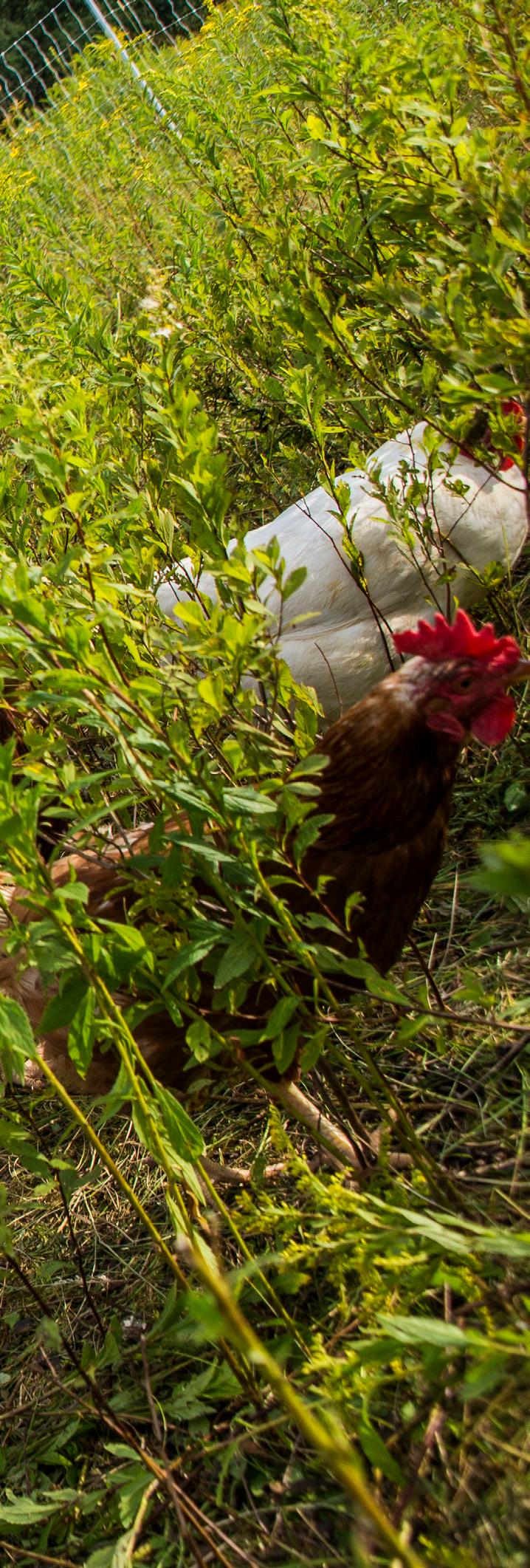

It starts with placing seeds in the soil, and after those seeds have sprouted and grown in our greenhouses, they are transplanted outside, where they are tended until their fruits and veggies can be harvested. The produce is used by our kitchen and served to our students, faculty, and staff in colorful salads, flavorful entrees, and irresistible home-baked desserts.

CAMPTREETOPS.ORG I NORTHCOUNTRYSCHOOL.ORG 9
Anything uneaten or unused is composted, and the resulting soil makes its way back to the greenhouses for another spring planting.
Over in the barn, eggs collected daily are served for breakfast. Lambs are born, cared for, and harvested for meat, as are chickens, pigs, and turkeys. Every animal here serves a purpose, and every aspect of farm life bears a lesson, but sometimes those lessons move at nature’s pace.
“The students work hard in the gardens and in the barnyard, and it takes time to see that hard work come to fruition,” Barn Manager Erica Burns said. “The learning and the experiences happen over the days, weeks, and months that they’re here with us.”
The barn and garden don’t stop functioning, of course, when students leave at the end of May. Campers arrive a few weeks later, and they keep things running so NCS students can return to well-tended gardens, healthy animals, and plenty of stacked firewood for the spring sap boil. It’s life on a real farm, and everything moves in a rhythmic cycle.
“Campers are doing the same chores as students, and they’re spending time in programs that expose them to the beauty of farming and where their food comes from,” Erica said. “They can choose which ac-
tivities they want to do, and that makes spending time on the farm that much more meaningful.”
EDIBLE EDUCATION
The concept of edible education entails more than physical labor, though. As students and campers keep our farm going, they are learning about academics, themselves, and each other. Our pregnant sheep are the subjects of biology lessons, while history, geography, and culture are a major part of discussions on seeds. And all of the physical labor—the barn chores, the weeding, the harvesting—bring children together. They learn that being reliable means being there for their peers, and Edible Schoolyard teacher Elie Rabinowitz said once everyone is in the same space to complete a task, one of his favorite things happens:
“They just start talking, and the next thing you know, they’re really getting to know one another,” Elie said. “Something about being out there together brings it out. They might be talking about their favorite music, or getting more into their personal lives, but either way, it has this effect where they begin to open up.”
While the bulk of the food harvested on campus finds its way into our dining room, some of it is brought into our Teaching and Learning Kitchen, where Elie gives students hands-on lessons in preparing the bounty they’ve helped nurture. Oftentimes, that involves picking herbs or veggies and bringing them straight into the TLK to be made into something delicious.
Cooking in a group setting requires communication and cooperation. It also inspires conversation, and Garden Manager Tess Faller said ESY lessons take advantage of those moments to ensure students never lose sight of how fortunate they are to have access to so much healthy food.
“Students in the ESY program learn experientially about where their food comes from,” Tess said. “That learning fosters a greater understanding and appreciation for stewardship of the earth
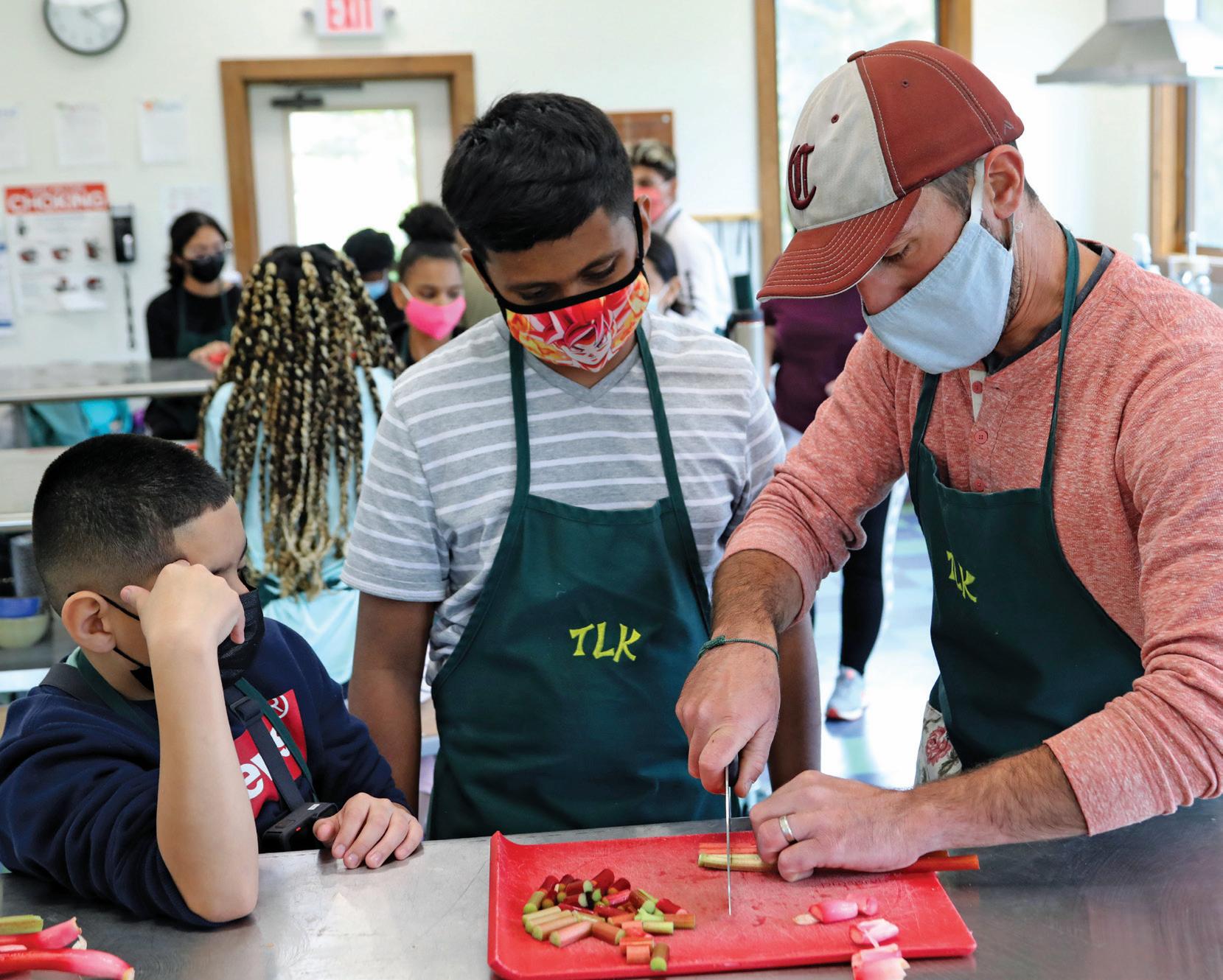
10 ORGANIC ROOTS I SUMMER 2021
through sustainable farming practices; nourishment of their bodies through healthy eating practices; and care for their communities through equitable and just practices around food access and the treatment of farmers, cooks, and all workers with our food systems. These are large and important issues that we approach from as many angles as possible through the ESY program, always with the intention of helping students make personal connections that are real and impactful.”
Tess added that being an official ESY program and a founding Edible Schoolyard member has helped Camp and School make connections beyond the Adirondacks. Our teachers and farmers have visited other Edible Schoolyard projects and attended conferences and gatherings, including events in New York City and New Orleans. It’s a relationship both Tess and Erica are proud to be part of, one they believe will lead to more dynamic edible education opportunities for our campers and students.
“In the future, I think that these connections will only continue to grow,” Tess said. “This is exciting to me because I feel like our ESY program has a lot to
both teach and learn from other ESY programs, as well as more local farm-to-school programs. We have been practicing and honing our systems of edible education here since our founding, and I look forward to a future when we can be a center of learning and inspiration for other schools and organizations, as well as our own students and campers.”

A LEGACY OF FARM-TO-TABLE
When Camp Treetops was founded in 1921, working our farm was simply part of the experience and a way of further connecting campers to the land. It all fit together in beautiful harmony. No one is above working for the food on their plate; here, everyone is equal as they work, play, rest, and eat together. But the work of mucking out the chicken coops or picking spinach is balanced by whimsy as campers read poetry to sheep while laying in the lush grass of Dexter Pasture, or pick wildflowers from our immense flower garden to make colorful crowns.
Former NCS-CTT Farm Manager and Farm Educator Katie Culpepper (CTT 92-99, staff 02-09, 11-14, 19-pres-
CAMPTREETOPS.ORG I NORTHCOUNTRYSCHOOL.ORG 11
Graphic recorder, facilitator, and visual communication professional Abby VanMuijen created unique visual notes for each Founding Edible Schoolyard during a virtual conference in January.
ent, NCS faculty/staff 08-09, 12), daughter of Camp Director Karen Culpepper and Director of Sustainability and Facilities John Culpepper, has lived on campus on and off since she was five years old. She is now a farmer, educator, and enthusiastic home cook. Katie explained that the Edible Schoolyard Project is school-driven, and even though Camp doesn’t have a formal ESY program, the idea of place-based education and farm-to-table eating have always been present.
“For Camp, it’s really about immersing the community members into what it’s like to live and work and eat on a farm, or closely connected to nature,” Katie said. “It’s trying to create that culture of thinking about who prepared our food, and where did it come from, instead of just eating what’s on our plates.”
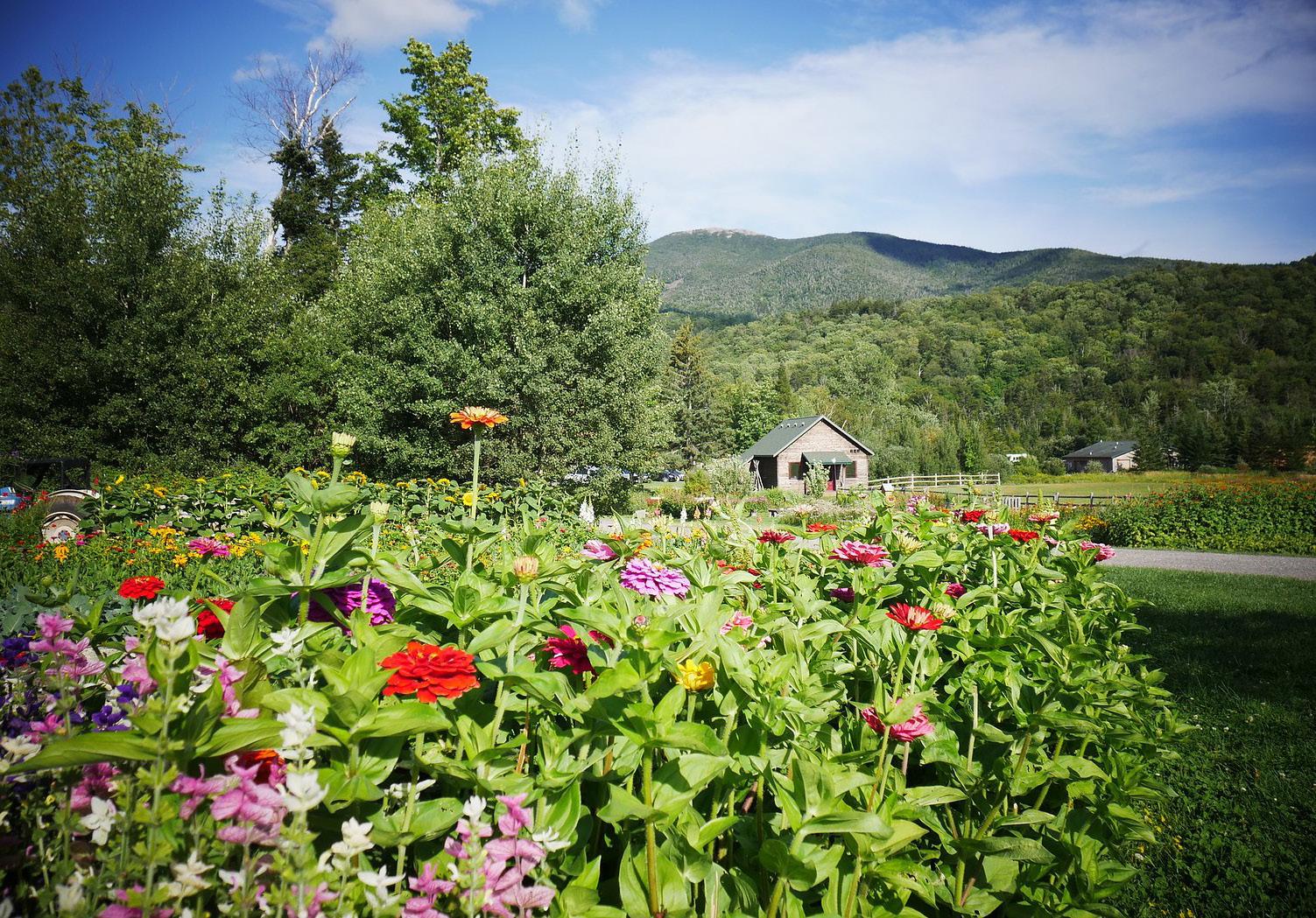
Katie said that even though ESY philosophies were baked into Camp before the ESY program was created, partnering with the project lent legitimacy to the experience by showing that it isn’t just something that
happens here. ESY is now an international movement, something people are more likely to recognize now than they would have thirty years ago.
Above all else, though, Katie thinks there is a deep need within humans to feel closer to the food they eat. Since most people don’t have access to a farm, ESY programs are fulfilling a much-needed role in their communities.
“I think there is an inherent desire in most people to have hands in the dirt and to eat things they feel connected to,” Katie said. “You can see that in both NCS’s Edible Schoolyard and Camp’s farm education programs. Kids aren’t as distracted and they are immediately drawn to food, and caring for food, and cooking food. It brings joy to people, when they have those opportunities, but there’s a lot that gets in the way when you’re not intentionally provided that experience. There is something in us that wants to make those connections.”
12 ORGANIC ROOTS I SUMMER 2021
GIVING BACK
As is the case at many independent schools and not-for-profit camps, tuition and enrollment fees do not fully cover the cost of providing our transformative programming. Since our founding, Camp and School have benefited from the incredible generosity of our community through the support of our annual, capital, and endowment giving efforts. You can give to North Country School and Camp Treetops in a variety of ways. All gifts are deeply appreciated and truly make a difference.
ONE-TIME OR RECURRING GIFT
With a check, credit card, or online. A recurring gift is a simple, efficient way to make a bigger impact.
GIFTS OF STOCK
A great way to give to NCS and Treetops and possibly receive significant tax benefits.
PLANNED GIFTS AND LEGACY GIVING
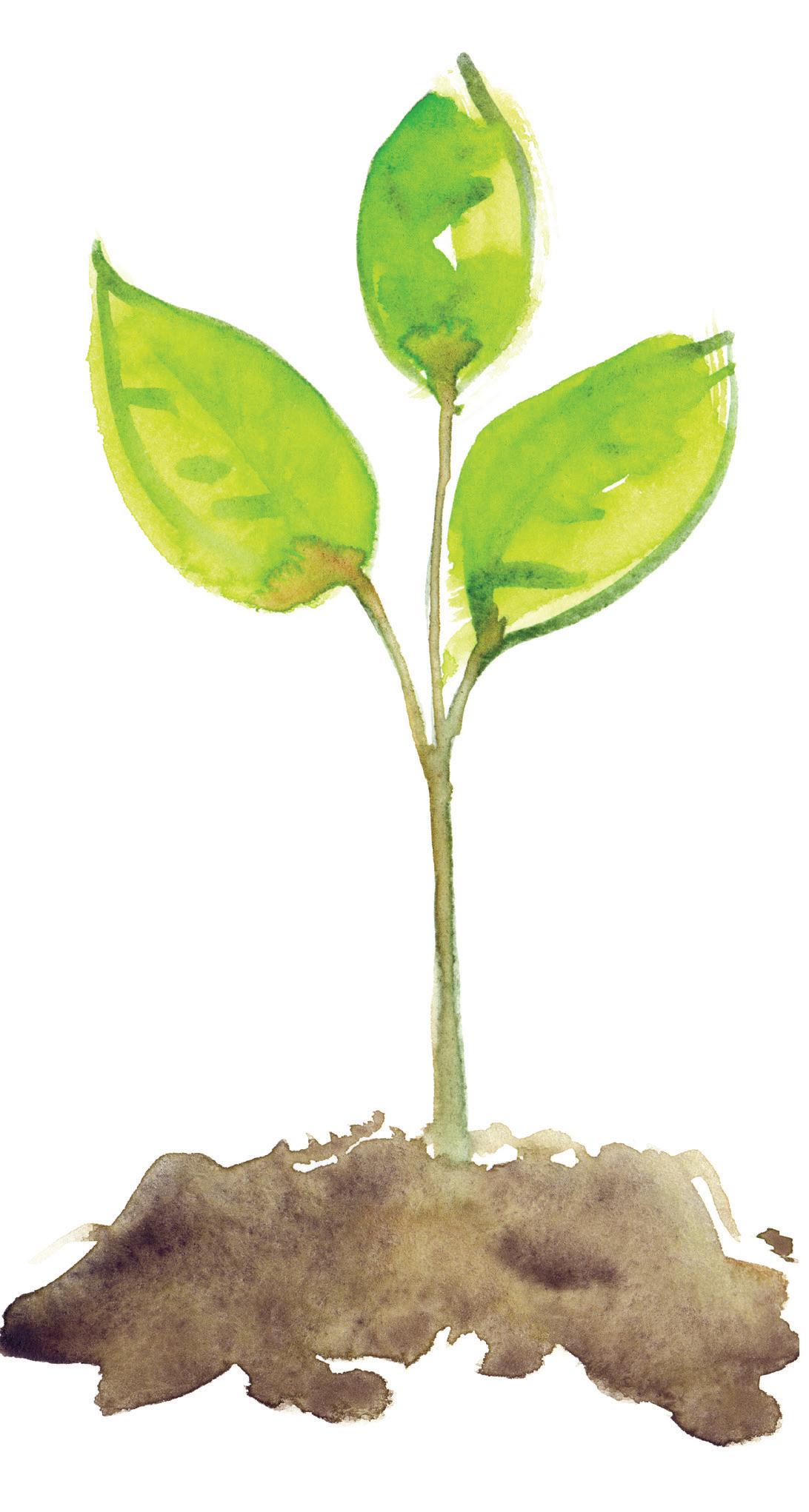
Planned gifts can come in the form of bequests or gifts of real estate, life insurance, and appreciated securities. Gifts of charitable remainder trusts are also an excellent way to donate while receiving both immediate tax benefits and income.
MATCHING GIFTS
Many employers will match your gift, doubling or tripling your support. Visit our websites for a database of employers who match gifts, or talk to your employer’s human resources department.
NCS and Treetops also gratefully accepts gifts via wire transfer and through donor-advised funds. For more information about any of these giving options, please visit www.camptreetops.org/giving or www.northcountryschool.org/giving, or contact Christie Borden (NCS 92), Director of Advancement, at cborden@ncstreetops.org or 518-523-9329.
NORTH COUNTRY SCHOOL AND CAMP TREETOPS:

Conversation
MARA: Todd, we’re coming up on your two-year anniversary. I’m realizing how different this second year has been compared to your first year at North Country School and Camp Treetops. Can you think back to pre-Covid days and tell me about your first impressions? How have those impressions changed or evolved over time?
TODD: Though it seems so long ago, I have a vivid memory of my first experience of our campers. It was one morning just after I arrived, and everyone said you have to go to council. So, I went to Junior Camp Council. I wasn’t exactly sure where Junior Camp Council was, but I knew it was held somewhere up Bramwell Run. I started walking up toward where I was assuming council was, and before I even saw a child, I heard children singing. It was a surreal experience—I came around the corner to Council Rock to see everyone singing, playing, and smiling. It was a beautiful entre to Camp and the beauty of childhood, the beauty of being in nature, and the beauty of being together. I’ll never forget it.
14 ORGANIC ROOTS I SUMMER 2021
A
with Executive Director Todd Ormiston and Trustee Mara Frankel Wallace (CTT 77–80, parent 14–15, trustee 17–present)
MARA: I love that image and feel it’s a great visual to support what we say is the greatest gift we can give our children: the gift of a summer at Camp Treetops.
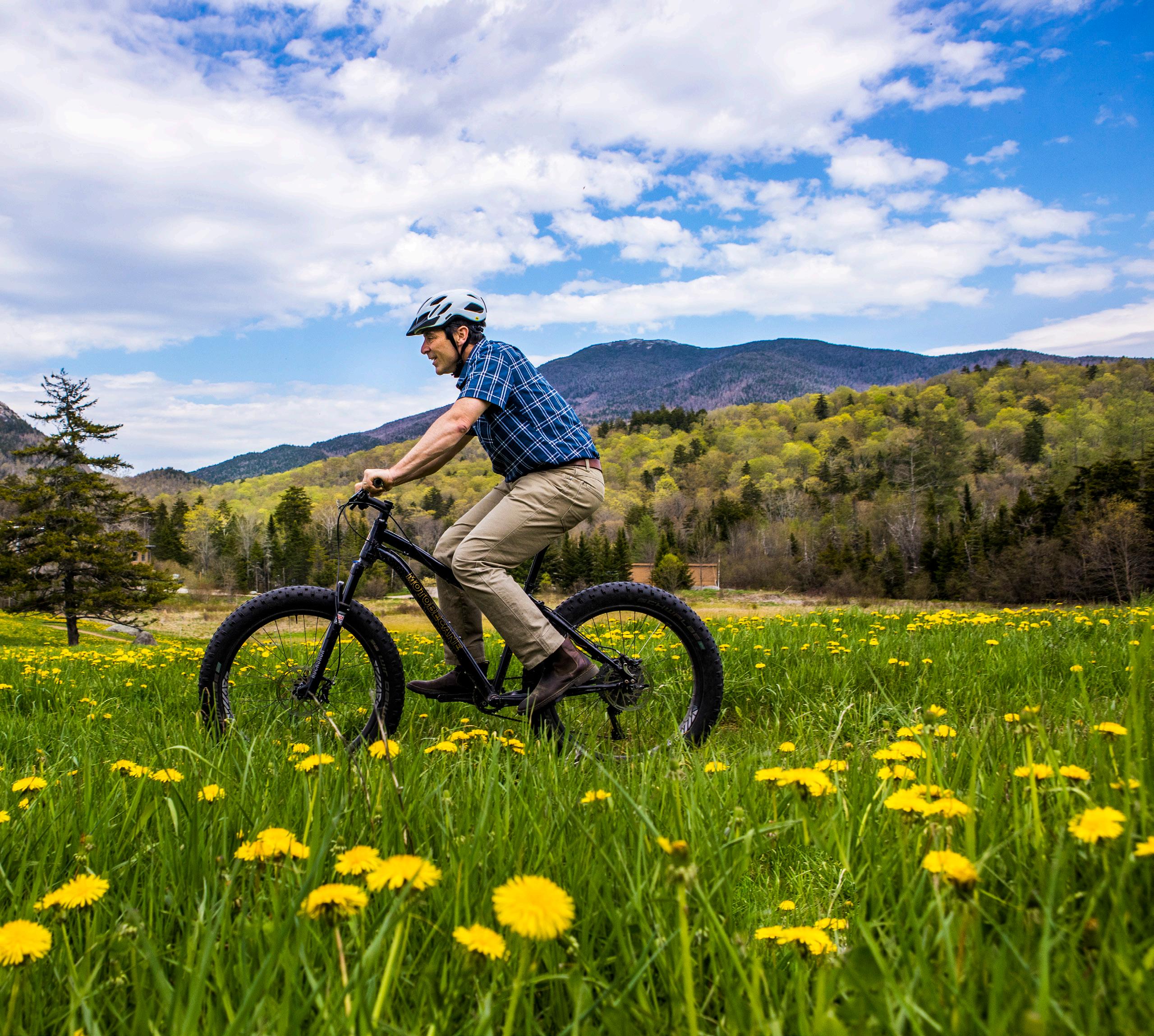
TODD: I think, more than ever, that vision of children being together in a screen-free environment, outdoors, doing healthy, childlike things is what we’re all looking for right now. Maybe more than any other summer, our kids and our parents and our counselors are looking forward to being back at Camp, be-
cause all the things they’ve been missing are here. And by providing that for 100 summers, I understand why so many people have talked about those seven weeks being the most important time of their childhood.
MARA: As we approach 100 years of Camp, much is still based on tradition, things that are eternal, timeless, and not needing change. How do we marry the NCS and CTT traditions we treasure with the changes in the world around us? I would say we are not out of
CAMPTREETOPS.ORG I NORTHCOUNTRYSCHOOL.ORG 15
step at all, but we are in a place that manages to hold on to tradition without being stuck in time. How does that work?
TODD: I think the core of our DNA, our values, really lean back on two things: allowing children to be children and celebrating childhood. At the same time, children are powerful. We need to give them the opportunity to make choices and to take risks, to be happy, and sometimes sad. And to understand that those powerful experiences are what have made our alumni of Camp and School go out and do amazing things in their communities. To give back not only to their community, but also understand what it means to be part of a family. And that being part of a family, or a community, isn’t a one-sided endeavor. That the only way you can be part of the community is to also give back to your community.
MARA: Over this past year, which has been challenging in so many ways, what’s impressed you about our community in dealing with Covid?
TODD: I think, without fail, there has been this yearning for connection. It certainly started with last spring and losing the end of the school semester, as well as graduation, and then losing Camp Treetops for the summer. We were doing everything we could to make sure our community understood what was happening, and that Camp will still be here. But also, I heard about all of the conversations and communication that our community was having without us (the institution) because they were seeking each other out. The spontaneous Zoom reunions, the meet-ups at a park in town, were modes of connection that weren’t being promoted by us.
What we’ve lost here are also those in-person connections. Despite the time together that we lost with our campers and students, the strands and threads of our community are so interwoven. I have been so confident that we, as a community, are going to pick back up and become even stronger, because we
never really lost each other over the past 16 months. So, we are starting from a position of strength in terms of already having a healthy community, and now we have the perspective of what it is to lose that connection. It’s only going to make us stronger.
MARA: What is your vision for the future? What do you hope the next several years will bring for this place and for the people who get to experience it?
TODD: Anyone who has experienced this place already knows School and Camp are special, and often indescribable, because everyone has their unique moment, or experience, or challenge, or victory. But what does align them all is that spirit of childhood, strength, exploration, and creativity. One of the projects we're endeavoring toward is to help promote the approach that North Country School and Camp Treetops has taken to adolescent development, and to more clearly define ourselves as a thought leader. Sometimes our children are asked to grow up too quickly, but here we recognize the power of a child is in being a child. We believe there's a voice out there that we should be part of—that voice of promoting healthy adolescent development—and so our goal for the organization is to be recognized as a thought leader in healthy development and in healthy risk-taking, and healthy exploration and creating curiosity. We want to share our model with others, because we think it's our responsibility to demonstrate that there’s a different way, other than four hours of homework for a sixth grader at night. A digitally enhanced childhood, surrounded by homework, and in competition, isn't always the best way.
MARA: Ours is an institution that is educating children four seasons a year. The kids are here year-round, the culture is year-round. I believe we give kids the time and space to be kids— to make mistakes, to learn to try again, to experiment safely, and to find their voice and their power. Through the years, our institution has
16 ORGANIC ROOTS I SUMMER 2021
I think the core of our DNA, our values, really lean back on two things: allowing children to be children and celebrating childhood
developed quite a bit of expertise in children’s developmental stages, and how they learn best, and how they grow best, and how we can best support them. What is it about our expertise and experience in those in-between years that makes us special?
TODD: We create a culture of care, an environment where they feel free to explore and free to make mistakes and free to ask questions. These children are going to grow and develop so much faster when they're in an environment that's not inhibiting their feelings while building their self-esteem. It starts with a community of care. The next piece of it is encouraging a community of learners. And you can't have a community of learners without the most incredibly talented, dedicated adults that you can imagine, all in one place and all speaking to the same values and philosophies that have been taught now for the past 100 years.
MARA: It's a caring, trusting community of adults that has appropriate expectations of our kids. We don't ask too much, nor do we ask too little. I will never forget
earning my camp knife as a nine-year-old; the sense of pride at having earned the privilege will never leave me. I think what we offer kids at both Camp and School is the opportunity to step up and feel good about what they've done—a day's work, caring for an animal, demonstrating the skills that allow you to carry a camp knife, or being part of a canoe trip because you've done what you need to do to demonstrate the skills and the responsibility to do so. We’re a place that offers real life experiences, and the chance to feel what it’s like to be part of a larger whole. And nothing is more rewarding than that.
TODD: One of the biggest challenges to character growth is the idea of instant gratification, and what instant gratification teaches children and adults is that if it doesn't work right away, then you can just go on to the next thing. The real powerful value of delayed gratification is the amount of time and energy and work and patience that has to go into success. It could be a child doing her first 46er or another child doing her last 46er. They might take a different amount of time, but neither happens right away. It takes a lot of time and energy, planning, and preparing to get there. It’s the canoe paddle that you make in woodshop. It's the relationships that you develop over seven weeks at Camp or nine months of School, or years of School and years of Camp, and that's why these relationships are so lasting, because they took time to develop.
MARA: Switching gears a little bit, I'd love to talk to you about equity and inclusion at our institution. We have a long-standing history of being a place that strives to be equitable and inclusive for all, ever since the 1920s. Tell us what's going on in that realm today and what you hope to achieve.

CAMPTREETOPS.ORG I NORTHCOUNTRYSCHOOL.ORG 17
TODD: We continue to be very focused on equity and inclusion at Camp and School. This includes curriculum and conversations that happen day to day, and also the leadership, guidance, and professional development training learned by our counselors and our faculty. We recognize our societal responsibility to encourage inclusion and know that a diverse environment makes the experience stronger for campers, school children, counselors, teachers, and our community at large.
The three-prongs of Camp Leadership, School Leadership, and Organizational Leadership are an important part of addressing opportunities to improve equity and inclusion. We are continuing to seek a more welcoming environment via recruitment of students and campers from diverse backgrounds and recruitment of counselors and teachers from diverse backgrounds. Our approach also involves bringing experts into the conversation, constantly and consistently, because we are all learners in this movement, and we all need to recognize there's so much more that we need to learn about, how we can make our organization more equitable, more inclusive, and stronger because of it.
We also have two new, very important partners. One is the City College of New York. We’re in the early phases of establishing an internship program
with education students there in undergraduate and graduate programs. That will serve as a pipeline for us to benefit from a more diverse teaching staff at School. We also have a new partnership with the Hall of Science Museum in New York, which will help us partner with more diverse Treetops counselors.

MARA: I would love for you to tell us more about the Access Wild Places project.
TODD: The Access Wild Places program was inspired and designed by children at North Country School. It first came as an idea from Inyene, who is an eighth-grader here from New Rochelle, NY. Her mother works for the New York City Department of Education. When Inyene arrived here, she did not see the value in exploring wild places. But as her familiarity with the outdoors grew, she recognized that it would have been a tremendous loss in her life had she not had the opportunity to be outside and see the stars and walk out comfortably in the grass, to see wild animals, and summit any of the High Peaks here in the Adirondacks. So she approached Jess Jeffery, who is the Director of our Outdoor Leadership Program, and said: “Why can’t we have a camp for kids like me who wouldn’t otherwise have a chance to be here and explore the wild places of the Adirondacks?”
We developed this program in partnership with the Hempstead School District in New York. We had 10 students and two teachers come here for a week. They got out of their comfort zone, went for a canoe ride, climbed the Crag, did a hike up Trouble and Balanced Rocks, and really, truly experienced the outdoors. Further, we provided expert mentorship from three amazing visiting mentors to help the children think through what they experienced: Lisa Muñoz (NCS 91, staff 03–06, 14–19), who is now the Director of Equity and Inclusion at The Putney School; Dr. Thomas RaShad Easley, from Yale University’s School of Forestry and Environmental Studies, a leader in the equity
18 ORGANIC ROOTS I SUMMER 2021
and inclusion movement who has presented many seminars and workshops to our faculty; and Mirna Valerio, an outdoor enthusiast and runner who advocates for inclusivity in the running community and is a leader in the movement of living your life the way you want to live it (See page 18 to learn more about Access Wild Places).
MARA: That's fantastic. Lake Placid is such a small and remote place—part of what makes it so special is that it's a little harder to get to, and yet you seem to be connecting Lake Placid to people and places beyond the Adirondacks. As a board member, I'm excited about making this opportunity available to more and more people.
Todd, you are almost two years into your tenure. I wonder if there's any difference between the role you anticipated when you stepped into this job of executive director, and the role you find yourself playing in our community? Is it what you expected?
TODD: I think my perspective has evolved over the last two years, and I expect it to continue to evolve. The health of our organization is my priority. And that doesn't necessarily mean the financial health. It's the health of our people. It's the health of our programs, both Camp and School. It's the sustainability of our vision and our mission. We need to continue to rigorously consider what we can do to improve the quality of the experience for our campers and our students. What are we doing to promote the health and wellbeing of our community, and how are we promoting the health and wellbeing of our climate? How are our graduates and past campers impacting the communities that they're joining, and what part of campus is enhancing their lives so they can enhance the lives of others? It’s a big job and a tall order to always be considering the bigger respon-
sibilities that we as an organization have. But as long as the people here are in a healthy place, and the program is doing healthy things, we know that the experience here—for 100 years at Camp and School— is a time-tested recipe for productive members of communities around the world. And so, when I look back at what I'm charged to do, it is to make sure that everyone can be their best selves, to teach and mentor the children the best way possible. To help them absorb as much as they can, so that when they leave Camp and School, we are guiding their decisions down the road.
MARA: Excellent. What do you love most about working with this organization?
TODD: I don't believe I've ever worked around a community of adults so committed, not just to the children, but also to their colleagues. It makes me confident that when we come across a crisis, that people will step up every time, rather than stepping back. It takes a special place to be able to say that.
MARA: What keeps you up at night?
TODD: The responsibility of inheriting and leading a place that has been so important to so many people, and ensuring that I'm celebrating its past while charting its future.
MARA: On behalf of the Board of Trustees, hiring you is one of the things we are most proud of. Ours is a special community and it takes a special person to lead it. You are that person, and we couldn't be more delighted to have you at the helm. Thank you.
Editor's Note: This interview has been edited for print. To hear the full, unabridged version, please visit: https:// northcountryschool.org/ncs-blog
CAMPTREETOPS.ORG I NORTHCOUNTRYSCHOOL.ORG 19
Anyone who has experienced this place already knows School and Camp are special, and often indescribable, because everyone has their unique moment, or experience, or challenge, or victory.
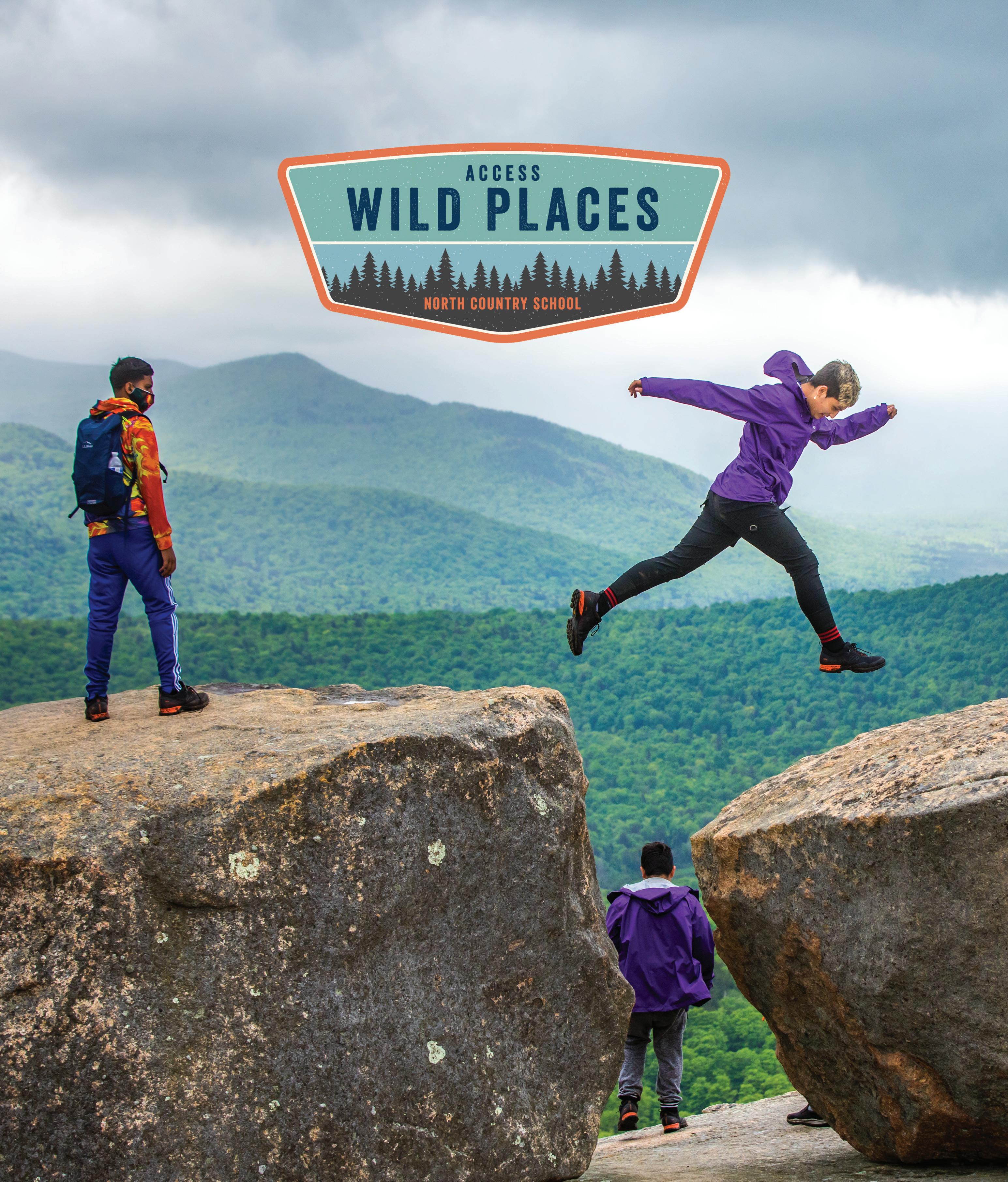
20 ORGANIC ROOTS I SUMMER 2021
WE ARE PROUD TO INTRODUCE ACCESS WILD PLACES, a fully student-designed program that invites peers from beyond the Adirondacks to experience the forests, lakes, and mountains at North Country School and Camp Treetops. Launched on May 31, Access Wild Places hosted ten middle school students and two teachers from the Hempstead Union Free School in Hempstead, NY. The five-day camp featured hiking, stargazing, kayaking, participation in mentorship programs, and enjoying the bounty of our Edible Schoolyard, among many other events and activities.
The driving force behind this initiative was eighth-grader Inyene, a student in our new Outdoor Leadership Program. Inyene’s own interest in nature began during her time at North Country School. Over the course of many thoughtful conversations on equity and inclusion as it relates to the outdoor industry, she decided it was time to do something to make the outdoors more accessible to everyone. Access Wild Places was born.
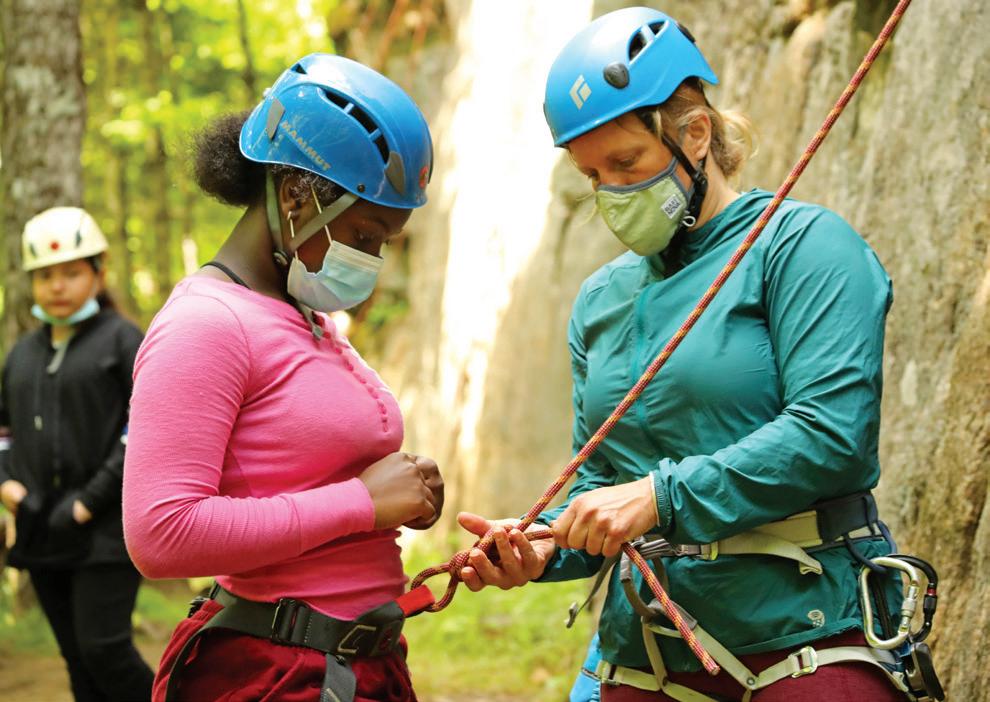

The visiting students spent their days exploring the rugged wilderness that surrounds our campus, and every evening they engaged in conversation with our three guest speakers: Runner and author Mirna “The Mirnavator” Valerio; Dr. Thomas Easley, Assistant Dean for Community and Inclusion at Yale University School of Forestry and Environmental Studies; and Lisa Muñoz, (NCS 91, staff 03-06, 14–19), Director of Equity and Inclusion at The Putney School.
We documented the entire Access Wild Places experience with video, photography, and daily updates. To learn more about this incredible new program and help us spread the word, follow us on Instagram, Facebook, and Twitter, and check out www.northcountryschool.org/access-wild-places.

CAMPTREETOPS.ORG I NORTHCOUNTRYSCHOOL.ORG 21
A Sweet Subject: SUGARING BY THE NUMBERS
BY BECCA MILLER
TTHE STEADY PING OF maple sap hitting metal buckets echoes through the mossy forest behind the Sugar House. It’s a sound that signals the start of one of our favorite times of year at North Country School: sugaring season.
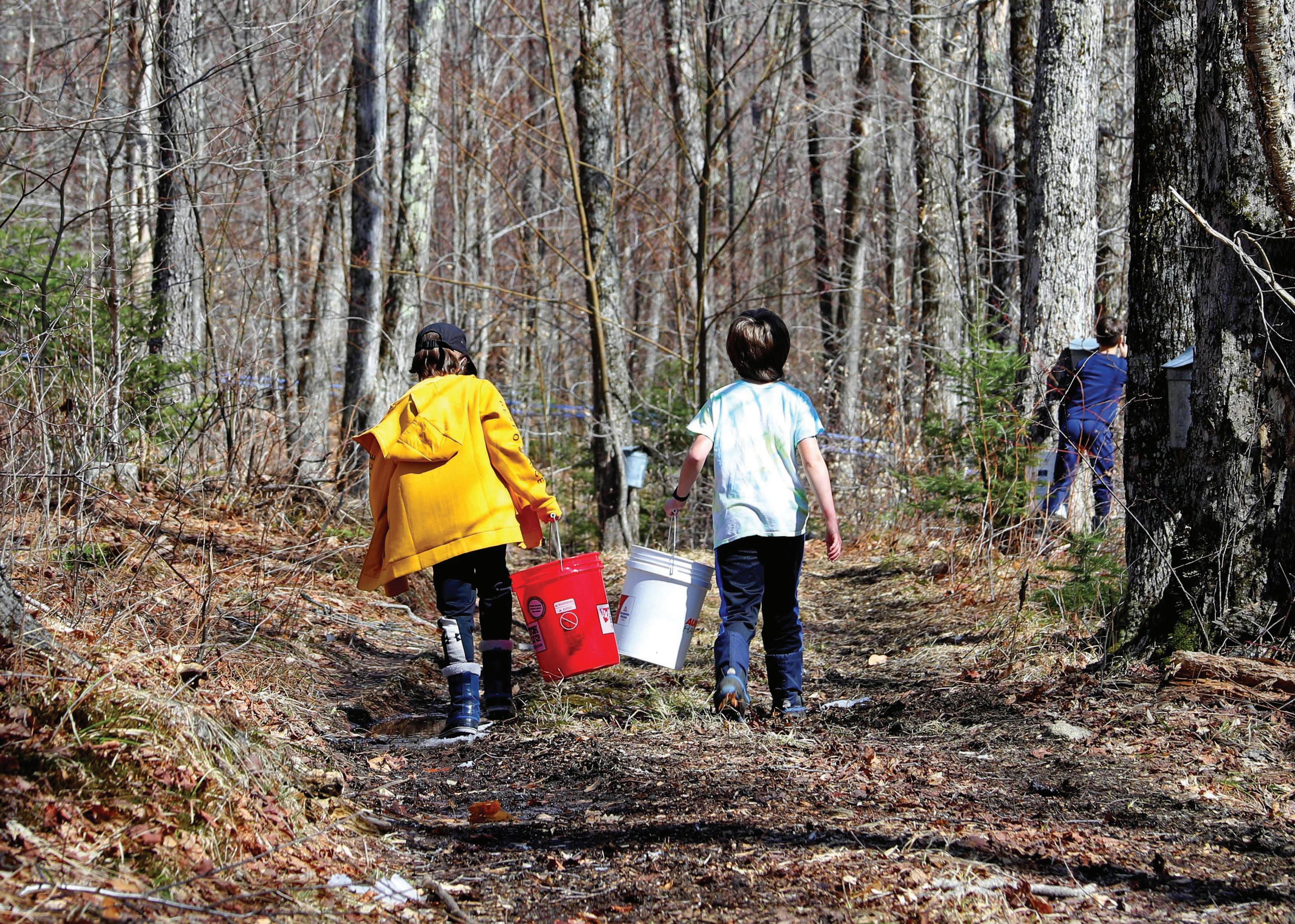
Sugaring season on our mountain campus means carrying buckets filled to the brim with sap through the woods, loading firewood into the evaporator, and waiting with baited breath for the first taste of rich maple syrup, still warm as it hits our glasses and tin cups. Making
maple syrup in the spring has been an NCS tradition for generations, and is an important part of our community farm work. Students, teachers, farmers, and staff all come together during those first warm days of spring to catch that fleeting sugaring window while it lasts, helping with the many tasks that will put maple syrup on our shelves for the following year.
Rapidly warming weather conditions made this season a particularly short one, but our students were still able to lend a hand in each step of the sugaring process. Groups spent sunny April mornings in our sugarbush assisting with sap collection, while evenings brought residential houses to the Sugar House to help with the boiling process.
Nature is our master teacher at NCS, and each
22 ORGANIC ROOTS I SUMMER 2021
distinct aspect of the sugaring season brings with it the opportunity for place-based learning. In science classes, students discussed the role sap plays in a tree’s life-cycle, observing the trees in our forest as spring temperatures prompted the stored sugars to produce leaf buds. Edible Schoolyard classes researched the history of maple syrup, reading different sugaring stories and legends from Indigenous groups in our region. And math classes delved deeper into the many culinary calculations at play as we transform sap into the sweet syrup that adorns breakfast tables at Camp and School.
There are countless numbers to consider as we plan our sugaring season. Each year, we must determine how many trees to tap and buckets to hang, the amount of firewood needed to heat the evaporator, and how much time needs to be set aside for each boil. The math and monitoring keep going even once we are mid-boil. We carefully watch the volume lower in our collection tanks while we track the minutes between each loading of the firebox. As we heat the syrup canner to the correct temperature for bottling, we test and retest the boiling sap until it reaches the perfect sugar-to-water ratio that makes it a finished syrup.
In Garth’s seventh-grade math class, students spent part of the Spring Term learning about the percentages and estimates involved in sugaring, including the all-important sugar ratios. Maple sap flows through trees at approximately 2 percent sugar and 98 percent water, but once evaporated to completion, maple syrup has lost nearly all of that water, bringing the sugar content to approximately 66 percent. For every gallon of maple syrup we produce, we must start out with a whopping 40 gallons of sap, making the boiling process a game of patience. The class learned how we monitor sugar levels throughout the boiling process using a hydrometer, which measures the density of liquids, and that we “draw off” the syrup (the process of removing finished syrup from the evaporator) only once those sugar levels are correct. Drawing off too soon leads to a potentially perishable product with too much water, and boiling too long produces crystallized, and sometimes burnt, maple sugar.

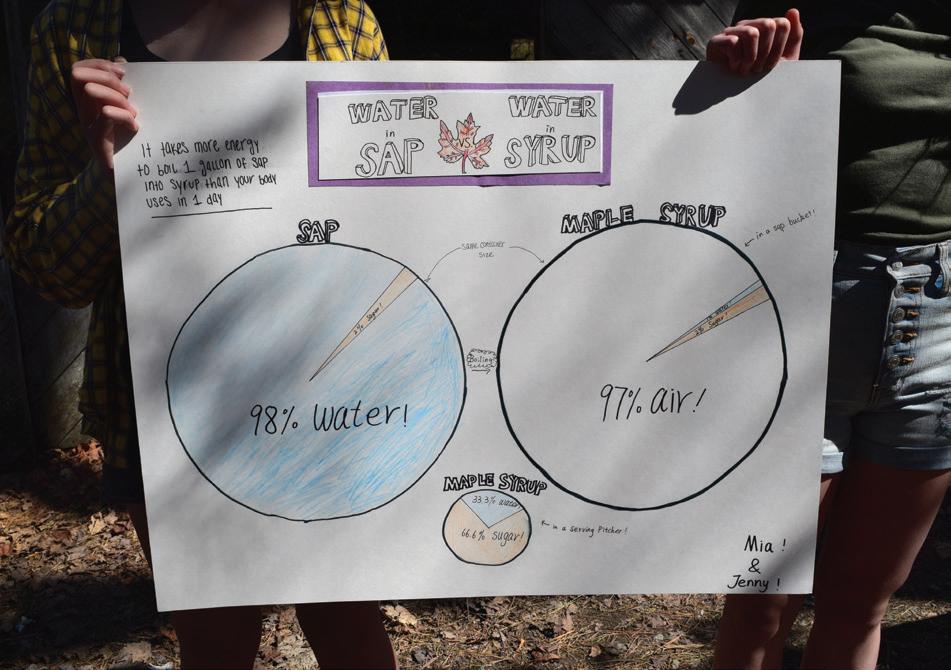
In order to help inform our larger community about the numbers at play as we boil sap into syrup, Garth’s class applied their newfound sugaring knowledge— along with their impressive artistic skills—to designing infographics for our sugarhouse walls. The finished posters illustrated the percentages of water and sugar present in sap and syrup in a variety of ways aimed at different learning styles, and include pie charts, bar graphs, boxes of blocks, and colorful botanical illustrations.
Toward the end of the sugaring season, the class visited the Sugar House once more to hang their posters around the space and discuss what they’d learned about maple math throughout the unit. In addition to reviewing how the same information could be portrayed in a variety of thoughtful ways, the class touched upon just how much time, effort, and sap goes into production of this beloved staple of our breakfast spreads.
Like so many farm-based lessons at NCS, delving deeper into the maple sugaring process reminds us that most of the items that end up on our plates took a long road to get there, and likely involved many hands and a great deal of effort. They are lessons not just in math or food production, but in respect and gratitude for the natural world and for the people who play a role providing for our health and well-being. It is an important reminder, and one that we strive to keep in our minds as we fill our breakfast plates with farmfresh eggs, juicy garden raspberries, and fluffy pancakes topped with warm maple syrup lovingly bottled at the perfect level of sugary sweetness.
CAMPTREETOPS.ORG I NORTHCOUNTRYSCHOOL.ORG 23
CHIL DREN’S GARDEN
Garden Mint Ice Cream
Recipe by Becca Miller
Illustrations by Gavi Mallory (NCS staff 17–19)
THE MINT BED IN OUR CHILDREN’S GARDEN is one of the most frequently visited growing spots on the NCS-CTT campus. Each spring, the apple mint, peppermint, and spearmint return, poking new shoots and leaves through the thawed soil after a long winter spent storing energy underground. The hardy plants reach and sprawl, and by late fall they’ve escaped their designated corner of the garden and taken over much of the surrounding ground. In the time in between, our students and campers can often be found picking mint leaves to breathe in their fresh scent, snacking on bits of mint leaves as they pass by, or harvesting armloads of the bountiful plant to use in tasty recipes prepared in the Teaching and Learning Kitchen and Camper Kitchen. This sweet ice cream recipe, prepared in past years by our Edible Schoolyard students and campers, can be prepared using any variety of fresh mint available during the long growing season, or it can be adapted to incorporate the dried mint stored on our shelves throughout the winter.
Garden Mint Ice Cream
Recipe makes one pint, but can be adjusted to any quantity that fits in your ice cream maker.
Ingredients
1 cup heavy cream
1 cup half-and-half or whole milk (the consistency will be icier with milk)
½ cup white sugar
1 tbsp maple syrup

Pinch of salt
1/3 cup chopped fresh mint leaves or 2 tbsp dried mint leaves

Directions
1. Place the fresh or dried mint inside a tied bundle of cheesecloth, making sure to use a few layers of fabric so no bits of mint seep through. This is particularly important if using dried mint.
2. Combine all ingredients in a small pot and heat on the stove over medium-low heat. Stir the mixture until the sugar dissolves. Continue stirring periodically, pushing the cheesecloth bundle down into the liquid, until the mixture is simmering gently and steam begins to rise off the surface.

3. Lower the heat to just above the lowest setting on your burner and continue to stir for 5 more minutes, keeping the mixture at a low simmer so tiny bubbles stay on the surface. Carefully watch the temperature and keep the mixture from boiling. After 5 minutes, the steam rising from the top should have a lovely, minty scent.
4. Remove the pot from the heat and let the mixture sit until it returns to room temperature.
5. Remove the cheesecloth bundle and transfer the mixture to the refrigerator. Chill for several more hours or overnight.
Remove the chilled mixture from the refrigerator and pour into an ice cream maker. Churn according to your machine’s specifications until the ice cream is thick and can be scooped onto a spoon without running off.
7. Transfer the ice cream into an airtight container and store in the freezer for several hours, allowing it to fully harden before serving.
24 ORGANIC ROOTS I SUMMER 2021
RECIPE FROM THE
Treetops Cente n nial Fu n d
Honoring the long tradition of providing access to the Treetops experience for as many children as possible
Gifts to the Centennial Fund help position Treetops as a leader in providing need-based scholarships for campers of today and tomorrow. The Centennial Fund, a component of the Annual Fund, will also strengthen our endowment.
Please make a Centennial Fund gift today. Visit www.camptreetops.org/100fund or contact Emily Eisman at (518) 523-9329 x 5450 or eeisman@ncstreetops.org Thank you!
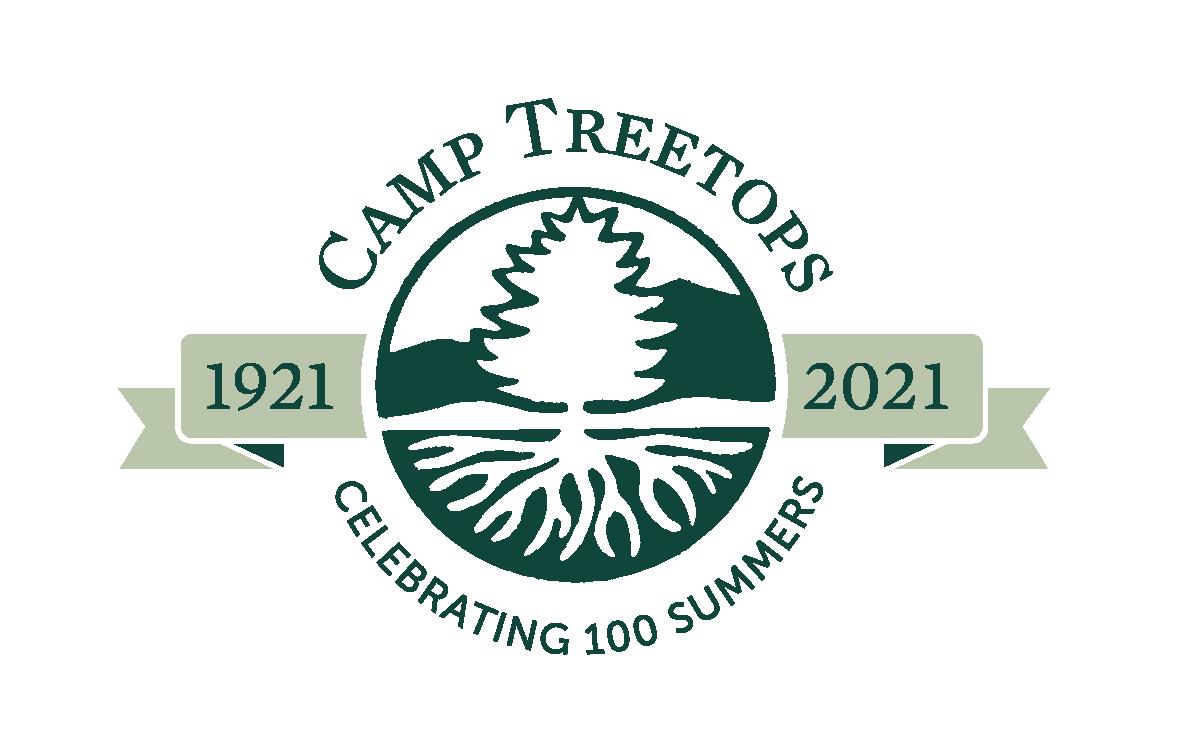
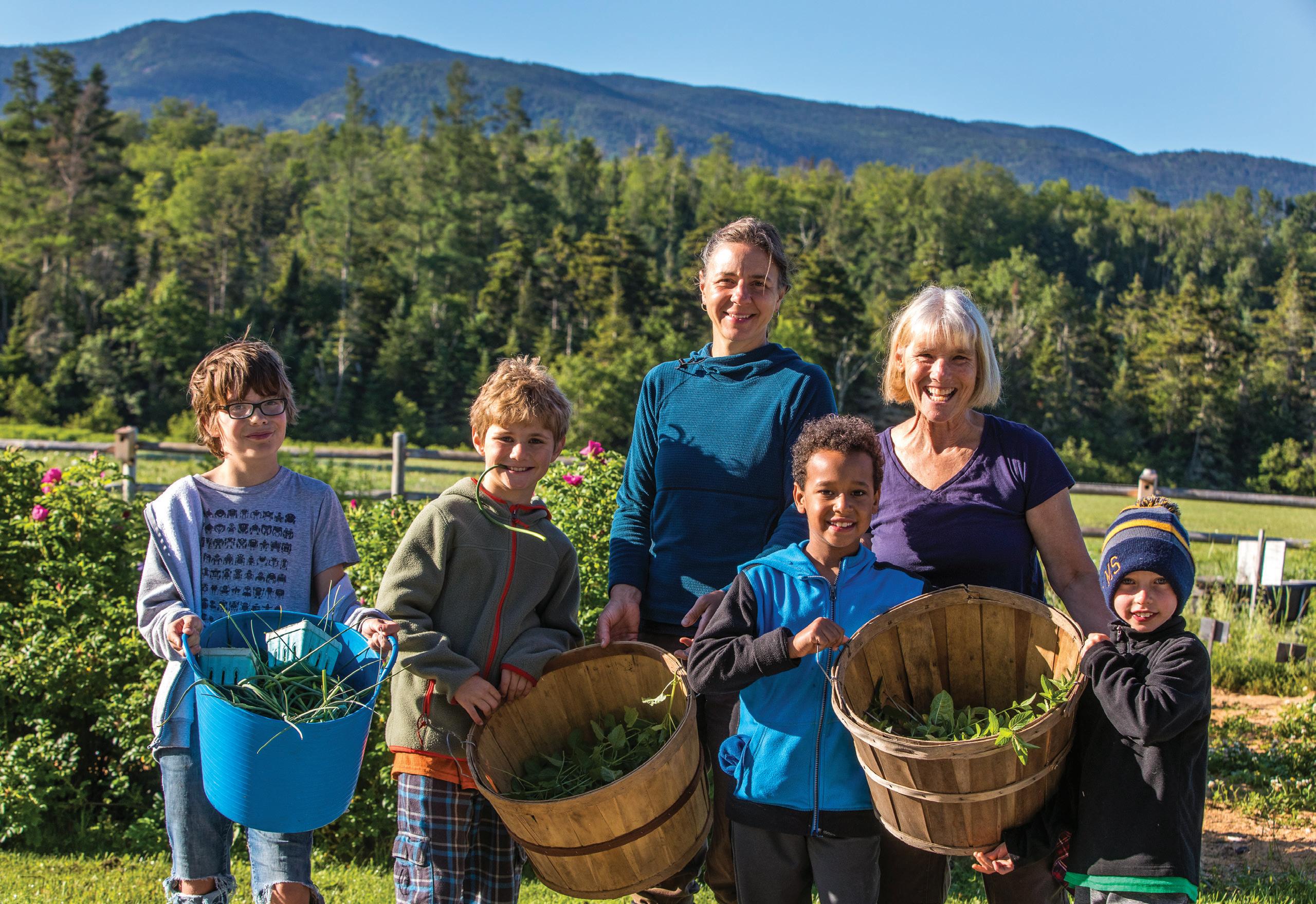
The gift of timeless summers
CELEBRATING 100 YEARS OF CAMP TREETOPS

ROUND, WE GO ROUND IN THE SAME SWEET CIRCLE
—ROY HURD, ADIRONDACK BLUE
After an unprecedented year, we are thrilled to celebrate Camp Treetops’ 100th summer. Since the very beginning, Treetops has offered an unhurried pace and time for childhood. Time to look at the stars, time to enjoy a meaningful conversation by the campfire, time to hear the peepers across the pond, time to harvest raspberries and mint, time to collect eggs still warm to the touch, time to master weaving on a loom. Time to just ... be. This summer, follow along with our weekly Camp Journal, which highlights how we instill in our children a sense of connectedness, creativity, confidence, resilience, and community. Learn more at www.camptreetops.org

CAMPTREETOPS.ORG I NORTHCOUNTRYSCHOOL.ORG 27
“It’s more than just memories ... it is a kind of magic that infuses our lives, whether we are there or thousands of miles away.”
—ANN COOPER (CTT PARENT 74–78, GRANDPARENT 08–14, TRUSTEE 78–87)

“WHAT IS SO WONDERFUL ABOUT THE SAMENESS OF TREETOPS IS THAT IT IS STILL, 100 YEARS LATER, FRESH, VALUABLE, AND ESSENTIAL.”
—JANE MASON (CTT
STAFF 87-89, 10-16, PARENT 11-16, NCS PARENT 15-16)
“Bytheendofthesummer, thereis confidenceinourcampers’strideandpurposeintheirsoul.”
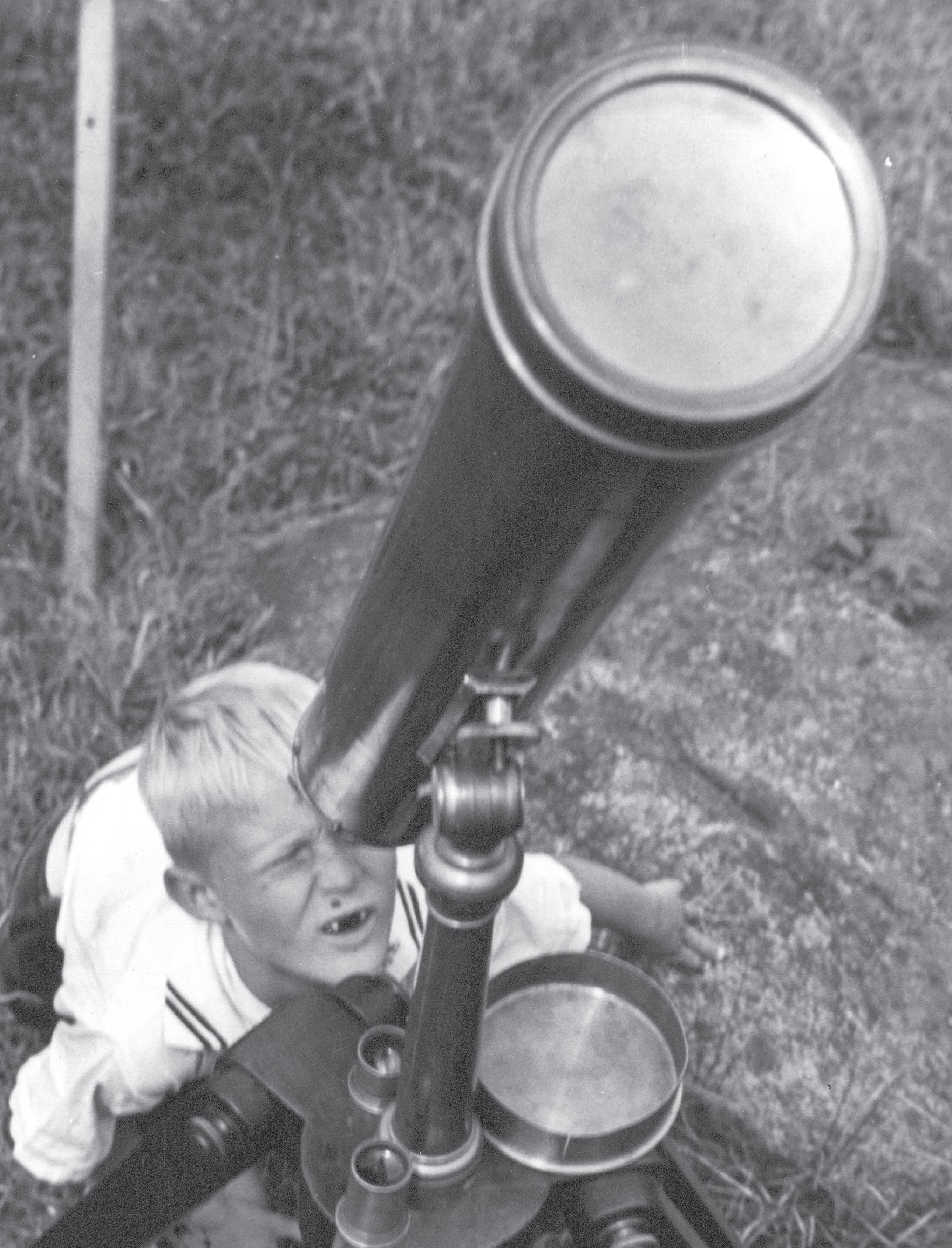
CAMPTREETOPS.ORG I NORTHCOUNTRYSCHOOL.ORG 29
—RUTH HARZULA (CTTSTAFF77-16, PARENT 99-09)
#ThisWeekAtNCS
Every week our staff writer, Becca Miller, keeps us up to date on the day-to-day lives of our students in the #ThisWeekAtNCS blog. This communication goes out via email every Friday during the school year. To learn more about the innovative hands-on lessons our students and teachers participate in, visit the #ThisWeekAtNCS blog on our website.
LUNAR NEW YEAR SNOW OX
To celebrate Lunar New Year and the start of 2021’s Year of the Ox, students sculpted a gigantic snow ox on the Lake Hill. Our young artists braved winter temperatures to complete this fun project, which combined our arts and outdoor programs in a creative way that acknowledged this important holiday.

QUILL PENS BY CANDLELIGHT
In seventh-grade history class, students learned about daily life in colonial days, including the many steps involved in tasks like doing laundry, making soap, hauling water, and cleaning clothes. The students then stepped back in time by cutting their own quill pens and using them to write letters by candlelight.

30 ORGANIC ROOTS I SUMMER 2021
INTERSESSION
During Intersession, a week of special art, outdoor, and skillbased programming, students spend each day split into morning and afternoon sessions that focus on activities of their choosing. This year’s offerings included beekeeping, stop-motion animation, flash band, history through movies, and backcountry skiing. For a first-hand look at Intersession through a student’s eyes, see sixth-grade student Joel’s review on page 50.
STREAM OF CONSCIOUSNESS LAB

For this lesson, students in eighth-grade Earth science class sketched three different sections of the same campus stream, then used classroom lessons on concepts like hydrology and sediment deposition to discuss their observations.
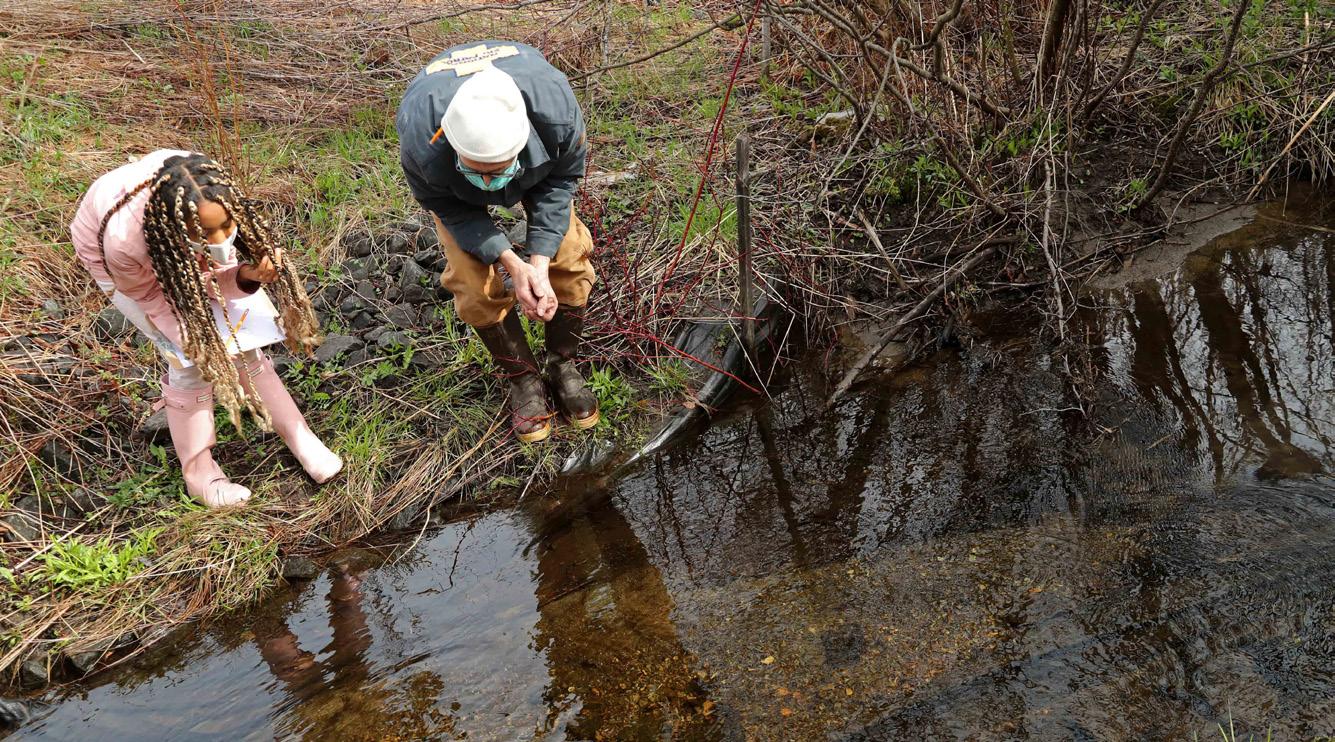
MARTIN LUTHER KING JR. COMMUNITY MURAL
In January, we honored Dr. Martin Luther King Jr. with programming focused on history, justice, and equity. One project involved our students creating personalized tiles, which became part of a collaborative artwork that highlighted our connection to one another. The center of the piece is a silhouette of a past ninth-grade class on top of nearby Cascade Mountain, and the surrounding tiles are adorned with bright images and words of love, encouragement, and hope.

CAMPTREETOPS.ORG I NORTHCOUNTRYSCHOOL.ORG 31
SHOW MUSt GO oN The



32 ORGANIC ROOTS I SUMMER 2021 H
THE HOUSE LIGHTS DIMMED, the audience went silent, and our students took the stage as the first scene of Mary Poppins began. The crowd ooh’d and aah’d as our young thespians performed, with Mary Poppins gliding overhead, against a backdrop of intricately-detailed set pieces. After more than a year of restrictions necessitated by COVID-19, the Walter Breeman Performing Arts Center was back and set to impress. During winter term, our students worked tirelessly to bring this iconic production to life in the WallyPAC. Design and Build students planned and constructed

the set, the theater tech crew coordinated the lighting and sound, music students played and recorded the soundtrack, and the performers read, memorized, and rehearsed until they had their parts down. Over the course of three shows, the cast and crew dazzled and delighted theater-goers with the sights and sounds they so diligently created. If this production of Mary Poppins has shown us anything, it’s that our children are going to consistently wow us as they make use of this fabulous space. We can’t wait to see what they do next.

CAMPTREETOPS.ORG I NORTHCOUNTRYSCHOOL.ORG 33
A TRADITION WITH ALTITUD E
EVERY SPRING, OUR GRADUATING NINTH-GRADERS EMBARK
upon a hike to the summit of 4,098-foot Cascade Mountain. This year, 13 students made the trek under a perfectly blue Adirondack sky. The spectacular view from the open-rock summit includes our campus and a sea of mountains, but the vista wasn’t nearly as inspiring as the camaraderie between these young adults. They helped each other navigate mud and steep terrain, and cheered in unison as the last hiker made the final push to the top. Once everyone was together, the students enjoyed snacks, dressed in costumes to pose for photos, and cracked jokes. It was a joyous day that won’t soon be forgotten.
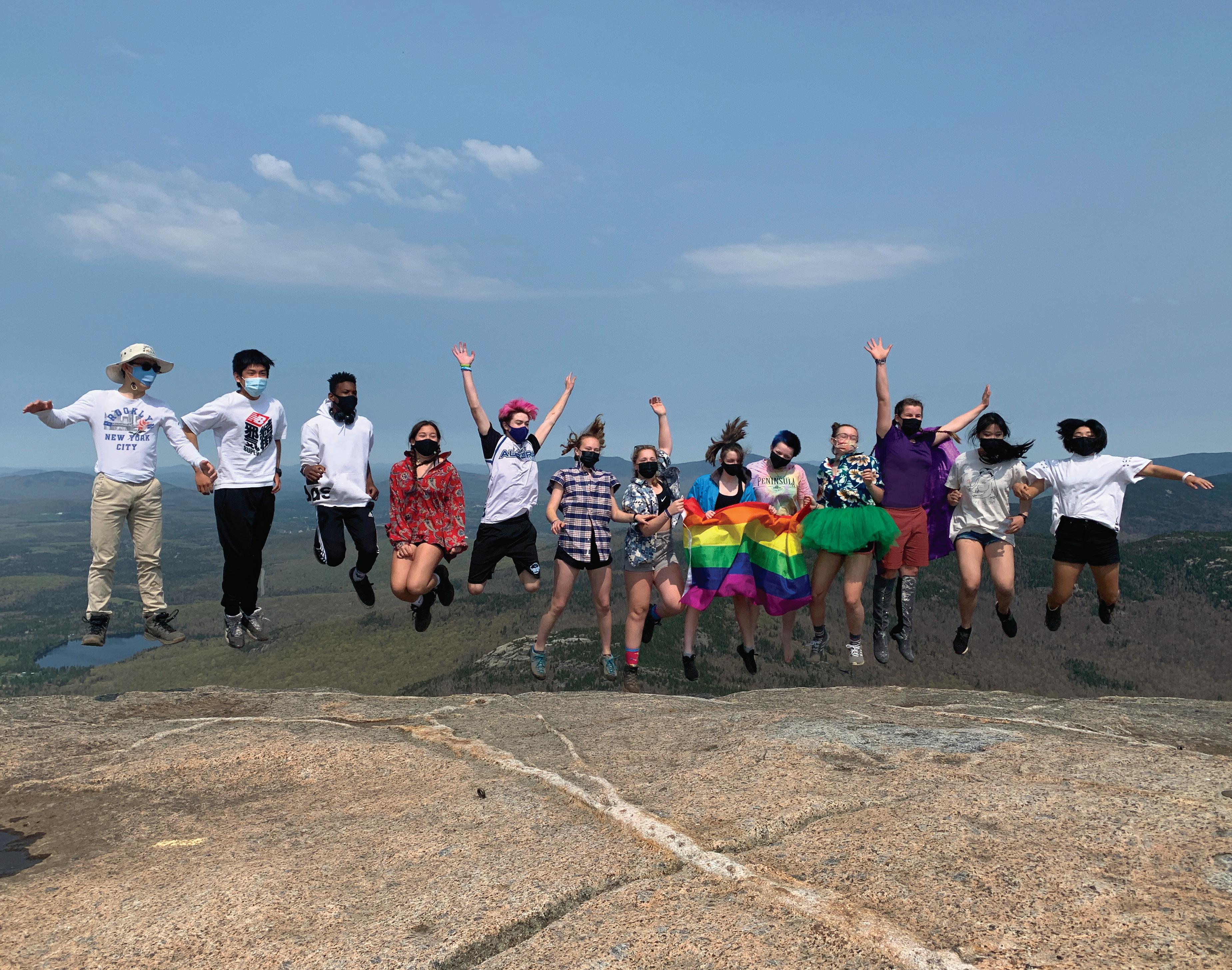
34 ORGANIC ROOTS I SUMMER 2021
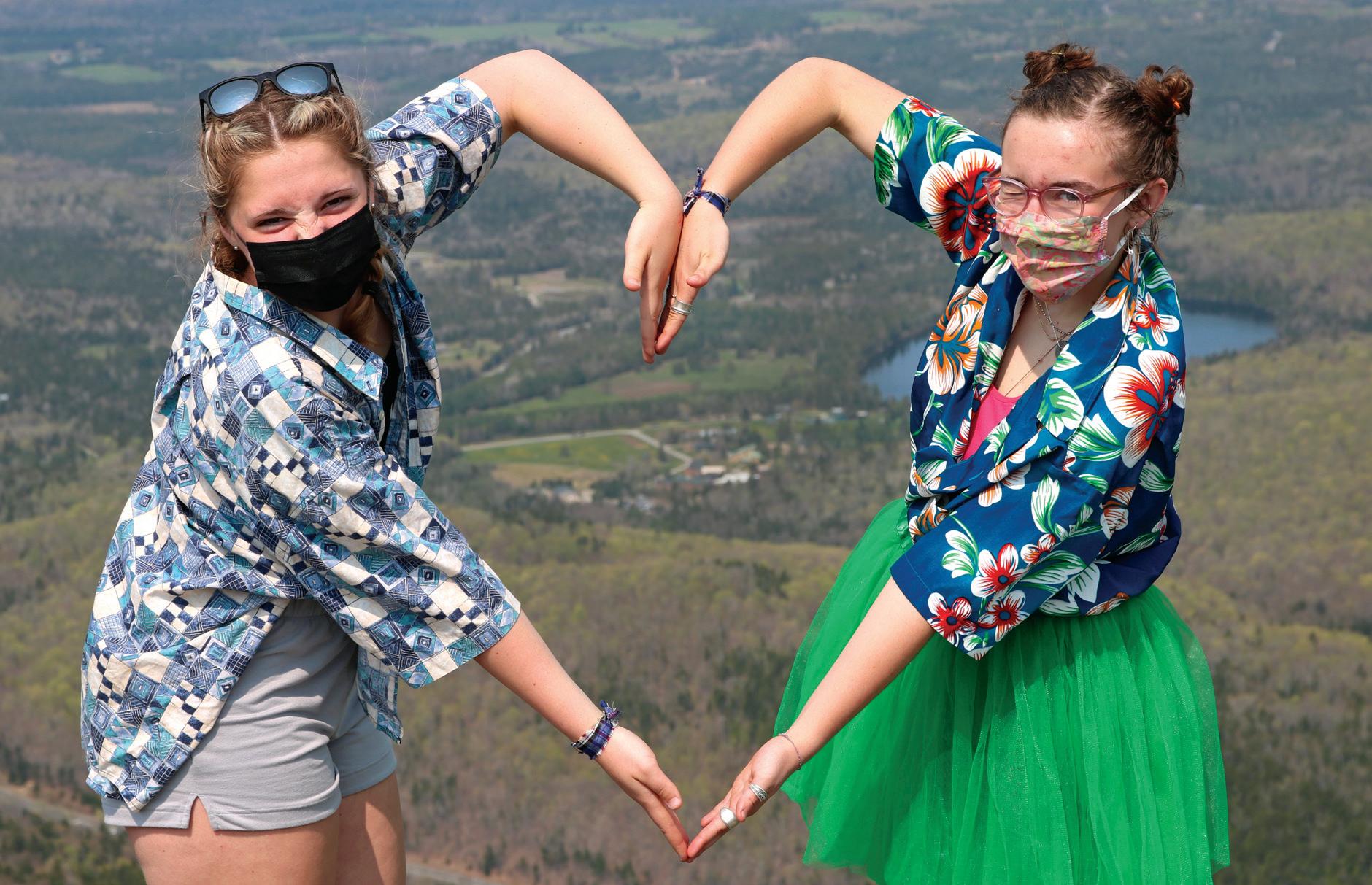
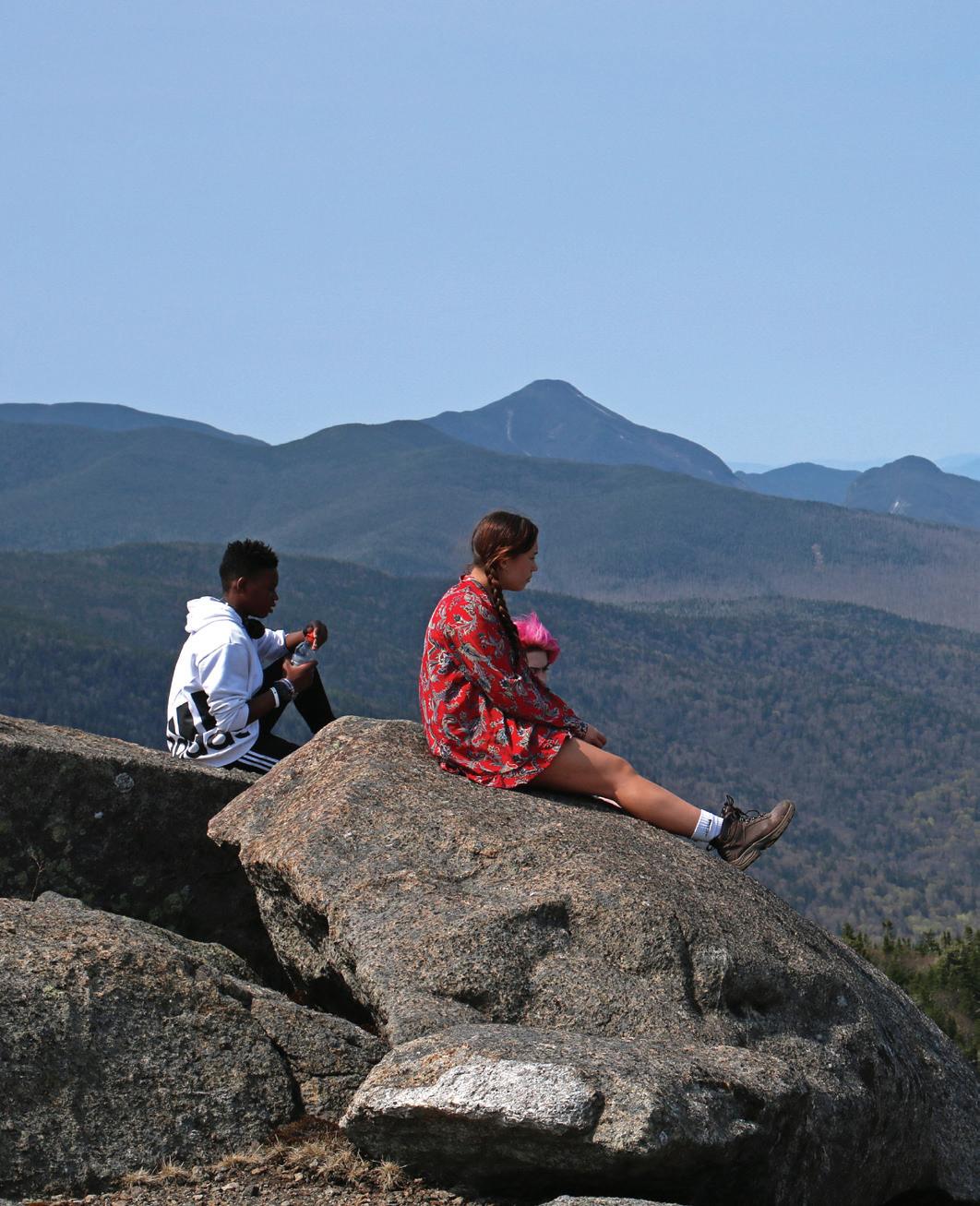
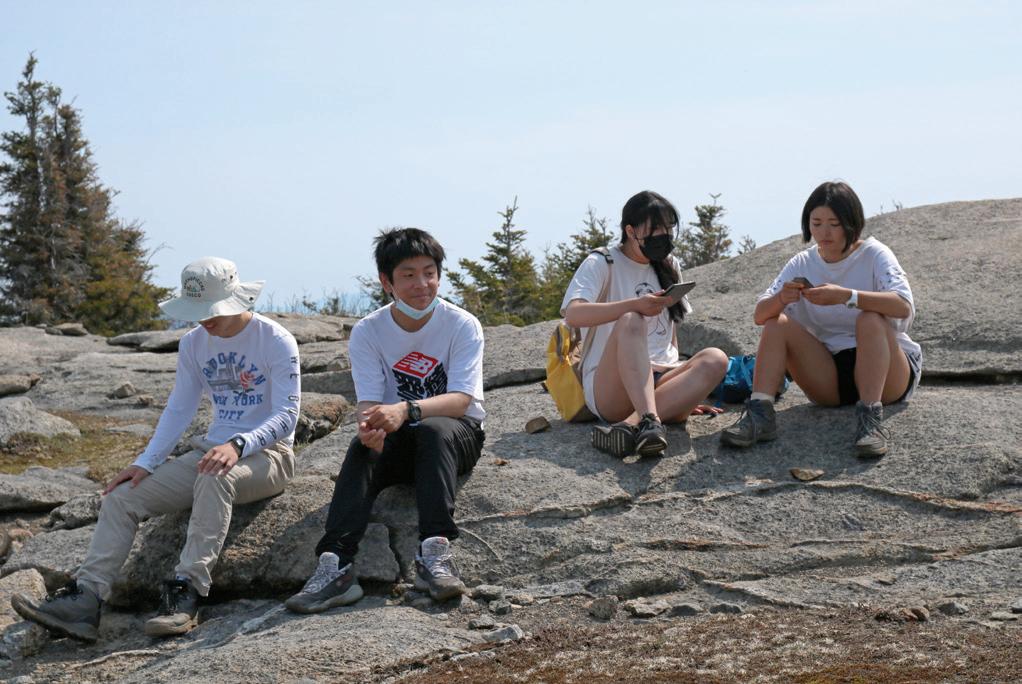

CAMPTREETOPS.ORG I NORTHCOUNTRYSCHOOL.ORG 35
GRADUATION 2021
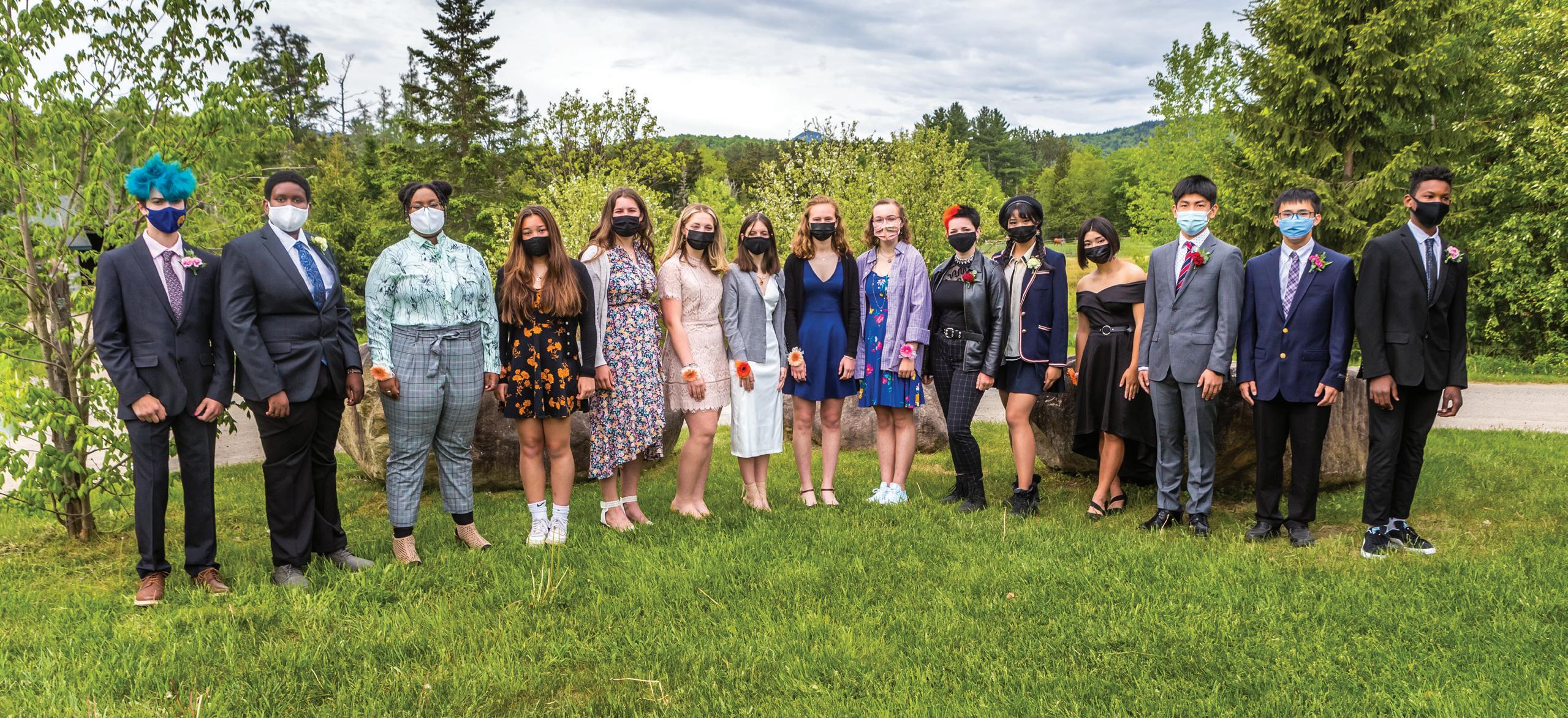
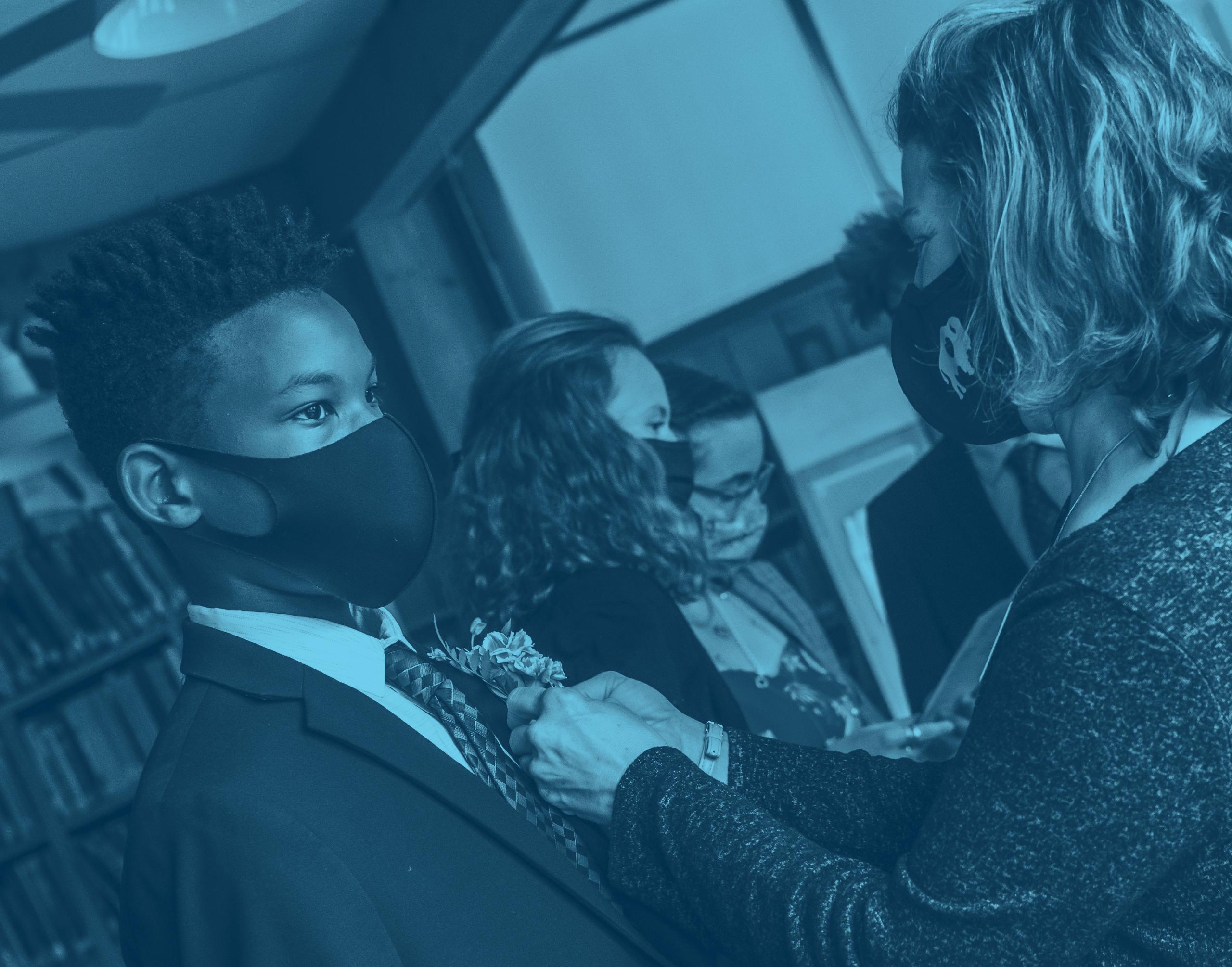
36 ORGANIC ROOTS I SUMMER 2021
NORTH COUNTRY SCHOOL’S 83RD GRADUATION weekend was highlighted by long-standing traditions and events. Livestreams of our end-of-year events were available for those who weren’t able to be on campus. Attendees were treated to a musical recital and a riveting production of Mary Poppins, both held in the Walter Breeman Performing Arts Center (WallyPAC).
As is the NCS tradition, each graduating senior was recognized individually by his or her advisor and also given an opportunity to acknowledge family, teachers, and peers.



Title Trek awardees included students Ella Robjent, Landon Schuster, Isha Smith, and faculty member Lauren McGovern; Jamieson-Roseliep Work Award winners Grace Duffy and Ella Robjent were also honored at the ceremony; and Xiangcheng (Jack) Dai’s piano solo, Excerpt of the 3rd Movement of Beethoven’s Moonlight Sonata, captivated an appreciative audience. Commencement speaker Yves Jean (NCS 89) shared his remarkable journey from a wide-eyed nine year old to NCS graduate to college basketball star, professional musician, and community leader. See page 38 to read Yves’ graduation speech.
CONGRATULATIONS TO OUR GRADUATES:

Misty
Alexandre Coghlan
Xiangcheng (Jack) Dai
Grace Duffy
Nianhan (Summer) Guo
Azalech Johnson
Steven Kinyua
Joshua Lally
Jessica Levy
Yihong (Tony) Liu
Xi (Cici) Liu
Ella Robjent
Eden Shaw
Nate Stephani
Yining (Cecilia) Wang
Bing Warren
Teagan Wentzel
Eliza Williams
Junyi (Jenny) Wu
Cocona Yamamoto
Huirong (Helen) Yang
Our graduates will be attending the following schools: Boulder High School, Dexter Southfield School, East Aurora High School, Keene Valley Central School, Kimball Union Academy, Mercersburg Academy, New Hampton School, Northwood School, Randolph Macon Academy, Stony Brook School, The Darrow School, The Hill School, Vermont Academy, Wasatch Academy, and Westtown School

CAMPTREETOPS.ORG
(Arden) Calhoun
Leave Your Legacy Balanced Rocks Circle
Louise (Lulu) Walsh (CTT 55–59, staff 64–69)
Louise (LuLu) Walsh has a longstanding love for Camp Treetops. Her enthusiasm for Camp is palpable, even over a Zoom-call interview for this story. She was happy to share many memories about her life-enriching experiences as a camper and counselor, and explained how her time at Camp inspired her to join our planned giving society, the Balanced Rocks Circle.
Louise was eight-years-old the first time she arrived at Camp. Camp Treetops had been recommended to her parents by noted attorney and labor mediator Theodore Kheel and his wife, Ann. Although a bout of homesickness struck Louise that first summer, she quickly developed a love of Camp: “I remember on Parents’ Weekend just waiting outside Junior Camp for their car to pull in. It took a while, but then I fell in love with it,” Louise recalled.

Louise described the pride she and her fellow campers felt while showing their parents the garden and the specific rows they had been responsible for
tending. She documented these memories in a short essay penned for a writing group. “Every child had a row in the vegetable garden to weed, and harvesting meant all hands to the garden. During Parents’ Weekend (now called Visitor’s Weekend), it was the first thing most kids from the city would show their family: their own row of kale or kohlrabi,” she wrote.
As Louise’s love of Camp grew, so did her love of horses. In another article for her writing group, she describes her love and care for a horse named Yankee. “In Senior Camp, I’d sign up for Yankee on barn chores for the sheer joy of filling his manger with sweet-smelling hay, currying and brushing him, cleaning his hooves (tricky with a high-strung horse), leading him to the watering trough, and, at the very end, giving him oats and trying to keep him from knocking the can from my hand in his excitement as I poured them into his shallow, wooden box.”
Louise would eventually ride Yankee. “I longed to ride Yankee, but he was the counselor’s horse. No camper could ride him. But after caring for him over several summers, I got the privilege of riding him home from our double-overnight at Cliffords Falls.”
When we asked Louise about what other experiences stand out in her memory, she stated without hesitation, “It was the music.” She described how Louise
38 ORGANIC ROOTS I SUMMER 2021
“It’s the importance of community and helping each other, and setting the table, literally and figuratively, for others,” she said. “I think that Camp was the beginning, the paving stones, for me to find the importance |of community in my life.”
Louise (left) with a Junior Camper circa 1964
Ganter (Taylor) played the accordion, and they sang camp songs in rounds, singing the verses in different languages. All of these years later, she still recalls the lyrics to many of those songs, and as Louise describes Camp songs, she appears to be enveloped in the warmth of the experience.
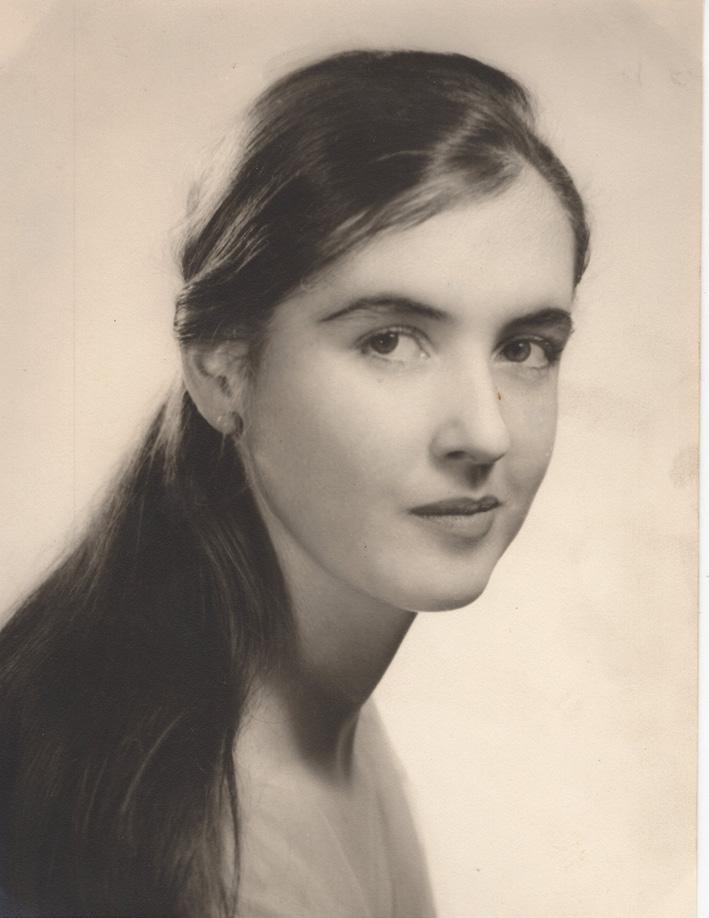
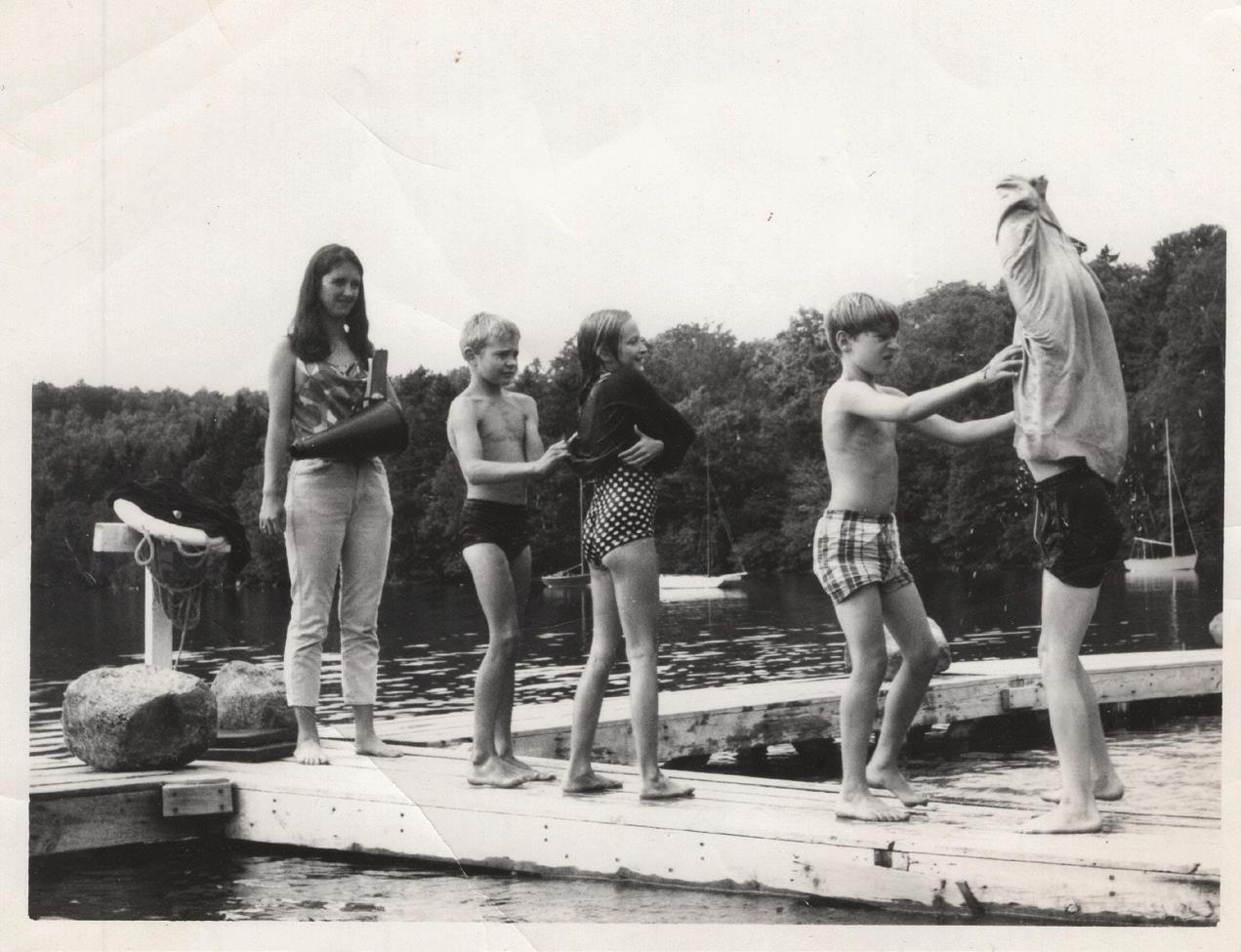
It wasn’t just her time as a camper that Louise found enriching—Louise’s experience as a Camp Treetops counselor was also a special time for her. One of her fondest memories was helping campers write and stage a production of Robin Hood. Among her junior campers was now-professional actor Kevin Bacon, who was cast in the lead role. She described him as “a delightful child: enthusiastic, serious, smart, and a great Robin Hood.” Louise fondly remembered receiving word from then-Camp-Director Helen Haskell that Kevin’s parents said the experience had meant a great deal to him. “I think it was the biggest compliment I ever got,” she said.
When asked if there were any Camp Treetops traditions that she remembered, Louise said, “I remember the tradition of giving to others.” This ties in to why Louise chooses to be a member of the Balanced Rocks Circle. “It’s the importance of community and helping each other, and setting the table, literally and figuratively, for others.” she said. “I think that Camp was the beginning, the paving stones, for me to find the importance of community in my life.”
Louise currently lives in Washington D.C. with her husband, Charles Rupp, with whom she has shared her love of Camp Treetops. We would like to thank Louise for her dedication to helping future generations of campers find the importance of community through the Camp experience.
Please consider a bequest or planned gift to benefit the institution and leave your legacy for the next generation of children. For more information, contact Christie Borden, Director of Advancement: cborden@ ncstreetops.org or (518) 523-9329, ext. 5446.

CAMPTREETOPS.ORG I NORTHCOUNTRYSCHOOL.ORG 39
Clockwise from above: Counselor Louise with swimmer at the waterfront circa 1966, Louise’s senior photo from Friends’ Seminary, 1964 Louise and Dale Console at a late ‘80s Friends’ Weekend
YVES JEAN’S (NCS 89) NORTH COUNTRY SCHOOL 2021 COMMENCEMENT SPEECH
Introduction by Todd Ormiston May 29, 2021

Yves Jean’s path to the NCS stage was unique. When he graduated from NCS 32 years ago, he probably wouldn’t have believed he’d be back to share his experiences and identify the qualities of an NCS education that had a lasting impact on his life.
After leaving North Country School, Yves enrolled at Rice Catholic High School in New York City, then earned a full scholarship to play basketball at the University of Pittsburgh at Johnstown. Now a professional musician and entrepreneur, Yves’ music is a mixture of pop, gospel, rock, soul, jazz, folk, classical, electronic, and world beat. He has released six albums and collaborated with countless Grammy Award winners. But Yves may be most proud of the City of Pittsburgh declaring January 17 “Yves Jean Day” in 2013. The declaration recognized his work raising awareness of and funding for addressing the issue of youth violence in the city.
Yves has certainly had an interesting journey, and his NCS experience played a transformative role in his life. It’s a story that is relatable to many of our graduating students, and one that reflects the value in recognizing the power of a child

I’M HONORED AND GRATEFUL TO BE BACK AT NCS after 30-plus years. First, I’d like to thank Todd Ormiston for his wonderful introduction. I’d also like to thank the trustees, teachers, donors, and families who entrusted their children to NCS to keep this magical place alive.
I would also like to give a special thank you to my wonderful mother, who isn’t here with us anymore, for making the amazing sacrifice that allowed me to attend NCS for five years and to be able to stand before all of you.
And lastly, before I get started, I’d like to thank the graduating Class of 2021 for staying positive, focused, and resilient and graduating during this abnormal year of the pandemic.













I want to share my NCS experience and how it shaped my life and possibly saved me. I will touch upon valuable lessons that I learned each year and how it can do the same for you, the Class of 2021. Hopefully you can all relate.


I remember September of 1984, getting off the Adirondack Trailways bus, coming from my hometown of New York City to NCS. I was nine years old in an unfamiliar place. I truly was scared, anxious, and confused. I really didn’t know what I was getting myself into.
The first thing that scared me were the dogs running around with no leashes on. I was deathly afraid of dogs. Just think, eights dogs that are hyper and happy-golucky, like the dogs you all know on campus. Suddenly
40 ORGANIC ROOTS I SUMMER 2021
there was Jackson, coming at a nine-year-old boy whose only experience with unleashed dogs is that they are considered to be stray, rabid, and dangerous.
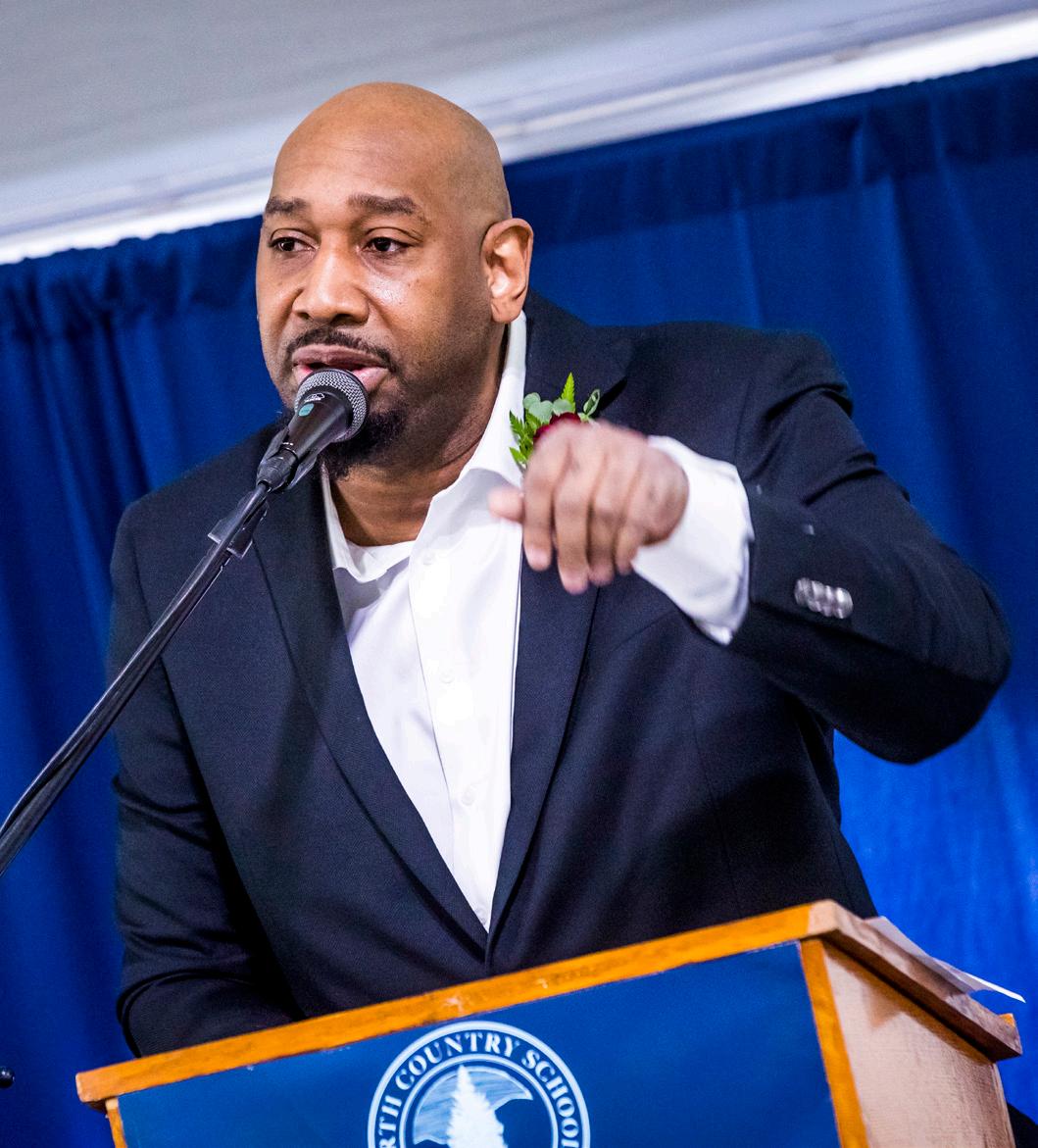
You see, folks, I was conditioned to know that when you see an unfamiliar dog that has no leash, you do one of three things: run, cross the street and hide, or pray that it leaves the area. No one briefed me to let me know that these dogs were wonderful, friendly animals. But now I like dogs, and NCS helped me get over that fear. In fact, if you go on one of my Instagram stories from two years ago, you’ll see how I recently rescued an abandoned dog!
My other experience when I arrived, which also had me truly confused, is they had students harvesting potatoes, bailing hay, shoveling cow crap, and picking horse hooves. All these things we tried within the first three hours of arriving on campus. I was like, “Wait, wait! I have to do all of this again tomorrow? They put me to work in this crazy place?!” However, there was a good reason for that. I’ll explain more later on.
My first experience living on campus as a fourth-grader was at Algonquin House. It was the first time I felt a sense of community, solidarity, and safety. I had amazing house parents: Nick Perry, Sue Young, and Martha Murphy. I was thrown off because I had three white folks saying they were going to be my parents for the year.
I thought this was a 1980s sitcom waiting to happen: I was this kid coming from the housing projects in New York, thrust into the Adirondacks. There was a bit of culture shock because as a nine-year-old living in public housing, you should not hear or see the things you’ve experienced. But I also want to let you guys know I’m not trying to be a victim here. I just want to give you all the background and the contrast of where I came from.

I had difficulty sleeping my first night at NCS. It was my first night of silence. No sirens, no gunshots, no loud music or any altercations—just complete silence. This made me anxious. In such a safe place, I felt so unsafe. What helped break this wall of anxiety, distrust, and fear, over the course of the year, was an activity called “home night.”
Home night was something I looked forward to every week. Helping to make home-cooked meals, going out to a movie theater with my housemates, or participating in events where the house competed against other houses in a form of solidarity in activities. For example, Algonquin House versus Mountain or Bramell houses in a game of capture the flag. This gave me a sense of community and of having a family. I eventually found my peace. With the help of house parents and house siblings, my limits were removed. I could eventually feel safe.
CAMPTREETOPS.ORG I NORTHCOUNTRYSCHOOL.ORG 41
Fall 1986
In my second year at NCS, I was a resident in Woods House. I had two wonderful house parents, Hock and Selden (West). I’m not going to lie, this was the house where I was really challenged to bring out the best in myself. At the time, Hock (former NCS-CTT Executive Director David Hochschartner) was the smartest person I’d ever met. This science nerd was also a super athletic person. He would go on adventures by himself, climbing huge mountains, skiing across the Alaskan tundra, rock climbing, and playing lacrosse, all while trying to further his own education. He truly showed me you can have balance and do anything you want in life, if you’re willing to put in the work.
My other houseparent, Selden, brought the best out of me academically. Selden, at the time, was on her way to being a published author. Clearly, she was a big fan of reading. I, on the other hand, was not. So you can only imagine the torture I felt, during the mandatory 30 minute nightly reading period, that we as NCS students were asked to partake in. Selden noticed that I was not using my full potential during the reading period, and this troubled her. She made it her goal to get me to love recreational reading.
The best way to do this was for her to find books with subject matter that I could enjoy and relate to. The books that Selden found for me to read, at times, were “hit or miss.” For example,
Selden knew I had a deep love for rabbits—I actually had a pet rabbit at one point while at NCS.
Selden thought it was a good idea for me to read a book called How to Raise Rabbits. It was a subject that I loved; therefore, she knew I would enjoy the reading period.
After reading the first chapter of the book, I realized that it was not only a book on how to raise rabbits, because chapter two was titled, “How to Kill and Cook Your Raised Rabbit for Dinner.” Since then, I have not read a book. Just kidding! Selden hadn’t realized the extent of the topic in that first book, but she didn’t give up on her efforts and wanted to redeem
herself. So she gave me another book, the autobiography of Kareem Abdul-Jabbar. It was the story of an African-American who came from the inner city, played basketball, then went on to have a tremendous college and pro basketball career. He also became a social activist. I loved the book so much that I would read beyond the allotted time for reading, and it was the first book I completed. Thank you, Selden!
The following year, I lived in Balcony House. That’s where I learned the value of cultural differences and equality. My roommate that year was Guillaume de Ramel (CTT 85–86, parent 15–17, NCS 86–89, trustee 07–21). He was an awesome kid, but we came from very different backgrounds. I grew up in New York City and he grew up in an affluent Rhode Island household; however, Guillaume never made me feel like I was less than him. We were intrigued by each other’s upbringing. He’d tell me about his summer trips to the south of France and I’d share my stories of taking the subway through the south of the Bronx. That was an adventure of its own back then.
You see, folks, North Country School created this amazing culture of tolerance and acceptance. Everyone had to do their fair share of work. No matter how much or how little money your family had, it did not matter. Together, you worked doing barn chores, waiting tables, chopping wood, or sweeping floors. You had a job and you did it together. But what I found to be one of the most valuable lessons that one can learn was holding hands at the lunch table before every meal with someone you had nothing in common with. That was the ultimate equalizer.
In my final year, I lived in Woods House again. I would have to say it was my most complex year. I learned about sensibility and accountability. My house parent was a person named Ben Runyon (NCS staff 89–00, parent 03–12, CTT parent 02–09). Still today, I find him as a mentor and my biggest influence in setting the stage for life after NCS. Ben and I made a
42 ORGANIC ROOTS I SUMMER 2021
But what I found to be one of the most valuable lessons that one can learn was holding hands at the lunch table before every meal with someone you had nothing in comM on with. That was the ultimate equalizer.
strong connection my senior year. Not only was he a highly intelligent teacher, but he was very good at basketball, which was my sport! So you can only imagine what it was like for me to have a house parent to push me academically as well as to help me work on my hoop skills on the court. I was in heaven!
But, on the flip side to my first year, once again, I was scared and filled with anxiety. Just like the nine-year-old who arrived here on the Adirondack Trailways bus five years prior, I did a complete 180. Just like all of you, Class of 2021, I knew my journey at NCS was coming to an end. Most of you sitting here know where you will go for high school. I didn’t know which high school I was going to, but I knew I was permanently going back home to NYC, back to the old neighborhood and environment I was brought here to avoid. I thought life was pulling a cruel joke on me. And most importantly, how would I apply this lifestyle and what I’d become accustomed to for the past five years at NCS to my immediate future?

As a form of rebellion, to run away from my problems, I started to have a disregard for others, for my fellow students, teachers, as well my work jobs. I think I missed two shifts of my work job on the honey wagon two times in one week. Ben, my house parent, immediately picked up on my new “attitude” and pulled me aside one day and said: “You need to start being sensible and you need to start thinking of others. You have people that are relying on you. You have underclassmen who look up to you and teachers and staff who are rooting for you to do well. And when you do leave here, you have more people that will rely on you to make challenging decisions. It may be a future basketball teammate, your mother, or a boss at work. I personally see you as a hardworking and dependable person who can have a successful future. So please, start being sensible.”
With the benefit of time and wisdom, I honestly believed Ben Runyon and the experience at NCS helped save my life. I was able to go back to the environment of New York City and not be phased or influenced





by negative elements. I was able to stay focused, to set high goals and accomplish them in high school, in college, throughout my professional music career, and through being a leader in my community.
Many of you sitting here may not have that experience in your minds right now. It may be next year or 30 years from now, where you too can look back at a conversation with one of your teachers that changed or saved your life.
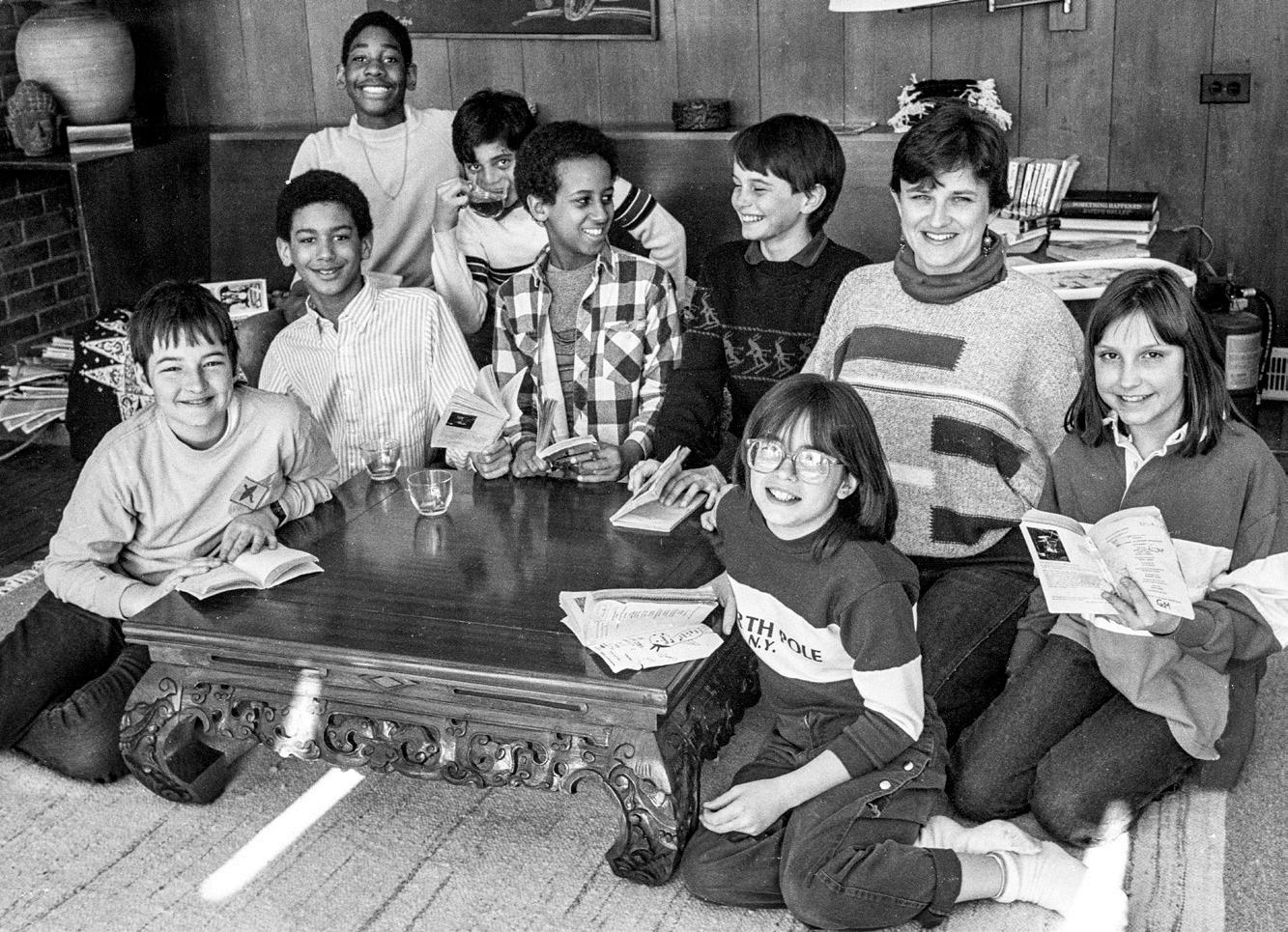
Even though we are 30-plus years removed, you and I have something we share: a super power. A super power that puts us ahead of most kids your age and even certain adults. You have learned to solve problems, to set amazing goals for yourself, to have a strong work ethic for yourself and others, a cultural awareness, tolerance and acceptance, a sense of care and understanding for the environment. You are a pillar in the community and you are prepared for the world more than you realize.
So whatever you plan on doing from this day forward, may it be your secondary school next year, or college in a few years, or in your professional life, if you feel you’re having trouble accomplishing something, just reflect back on your experience at NCS and I’m quite sure those experiences can be the motivation to get you over the hump.

I hope that one of you will come back to NCS to speak at a commencement for future graduates and continue the positive cycle. Congratulations and God bless you all.

CAMPTREETOPS.ORG I NORTHCOUNTRYSCHOOL.ORG 43
Winter 1987
Trustee Transitions
Ami Brabson and Skye Raiser were recently elected to the Board of Trustees for School and Camp. We are excited to welcome these dynamic and committed women to help guide Camp and School.
Ami Brabson’s son graduated from NCS in 2018. Ami is an actor, singer, and producer. She has many television and stage credits in shows including Power, Homicide: Life on the Streets, and Law & Order. She conceived, wrote, and starred in the one-woman shows Phenomenal Women and A Change is Gonna Come, with which she has toured throughout the Northeast. The New York premier of Tough Titty, a play by Oni Faida Lampley, was Ami’s first project as a producer in which she also played the starring role. Ami is also an accomplished soprano and cabaret singer. Her volunteer work includes the Screen Actors Guild’s BookPALS, Montclair Emergency Services for the Homeless, and Unitarian Universalist Congregation at Montclair (Music Program/After School Study Program/Religious Education Teacher). Ami received her Master of Fine Arts from the NYU/Tisch Graduate School of Acting.
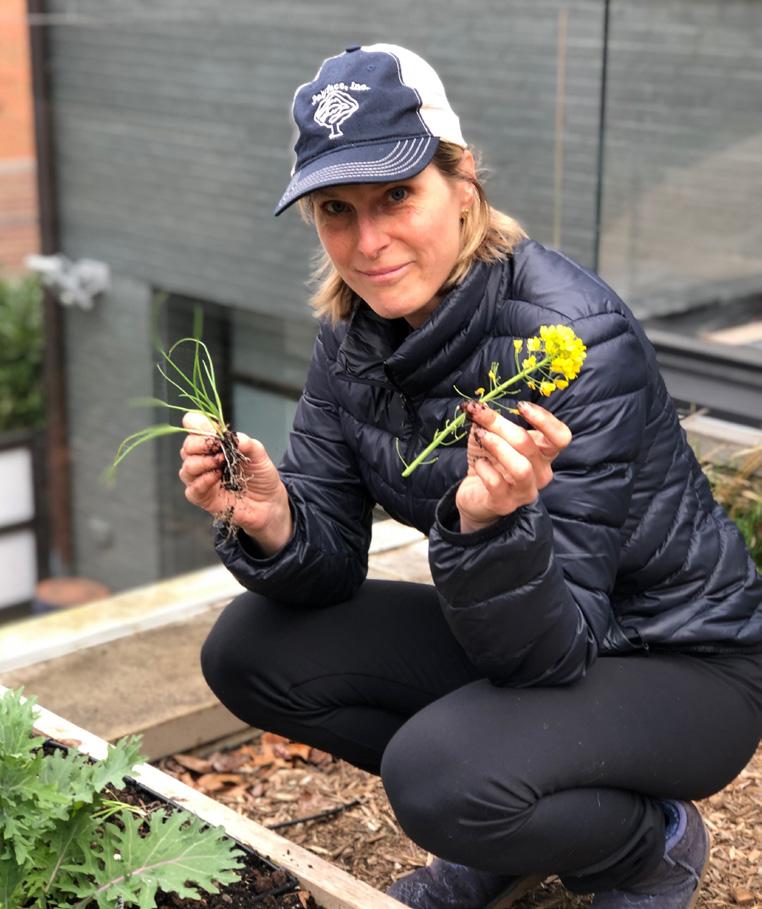

Skye Raiser’s son will be a seventh-grade student at NCS in fall 2021. Skye has spent her life advocating for the needs of others and for the health of our planet. Though she spent much of her career as a photographer, since becoming a mother in 2005, Skye has shifted her work focus to health and the environment. In 2019, she launched Green Up Your Life, a company that advises and coaches on sustainable living. As a photographer, she has traveled extensively, doing documentary, editorial, and portrait work. In 2000, she published a book called Children Are Children: Photos from Nine Countries. Skye holds a Master of Arts from Johns Hopkins University’s School for Ad-
vanced International Studies and a Bachelor of Arts from the University of Virginia. She also holds an executive degree from Columbia University’s Earth Institute for Environmental Sustainability. She has served on the boards of the Children’s National Medical Center, the National Cathedral School, and Hearts for Heroes, as well as others. She is married to David Perlin, has six children. three dogs, and two horses, lives in Washington, DC, and considers herself a multi-species herd manager.
A Fond Farewell
We bid farewell to Guillaume de Ramel (NCS 89, CTT 85-86, parent 15-17) who has served with distinction on the Board of Trustees since 2007. Camp and School have benefitted from his perspective, commitment, and dedication. Fellow trustee and Governance Committee Chair Matt Salinger (NCS 74, CTT parent 04-08), in a tribute to Guillaume, said “… his influence and steady pilot’s hands on the controls have never been more noticeable nor more needed and appreciated than when he joined the search committee to help us find Hock’s replacement. He worked tirelessly when we needed him the very most. Guillaume’s warmth, conviviality, and steady, thoughtful advice will all be greatly missed.”
Skye Raiser
44 ORGANIC ROOTS I SUMMER 2021
Ami Brabson
IN MEMORIAM
Veronica “Bunny” Leclair
1958–2021
IN MEMORIAM
Robert Console
1949–2021
Robert Console (NCS 62) passed away May 11, 2021, from complications of kidney failure. He was born in New York City, son of the late Helen E. Daniells, MD, and the late Arthur Dale Console, MD. He leaves his wife of 52 years, Susan Heys Console; a sister, Dale Console (NCS 66, CTT staff 70–83); and her daughter, Kimberly Narol (CTT 98–04, staff 10–14, 16–present, NCS staff 13–14). Bob spent his working career as a software engineer. Bob and Sue attended most of the Friends' Weekends over the last 20 years, making numerous friends and enjoying time with his sister and niece. Bob and Sue spent their honeymoon in Lake Placid so Bob could show her NCS. They spent several wonderful evenings there that week, visiting with various staff, including Walter and Leo Clark, and joining the school for Sunday dinner.
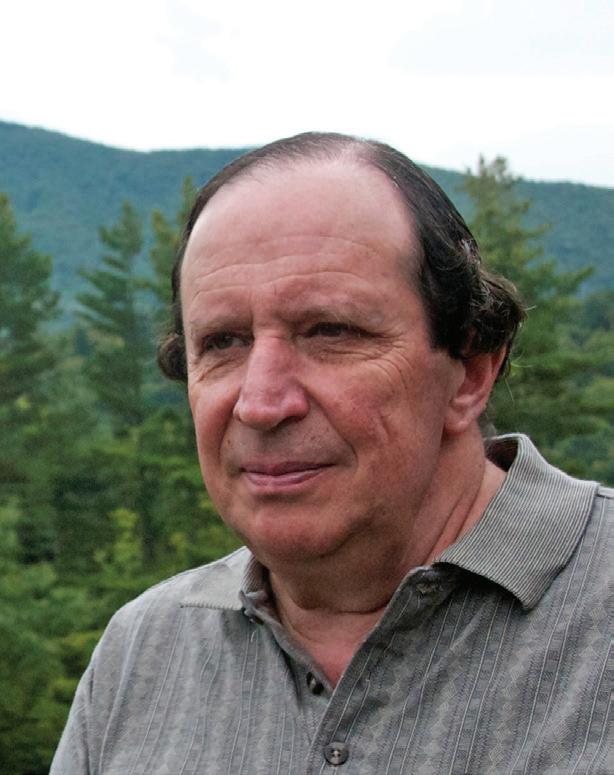
Veronica “Bunny” LeClair (NCS staff 07–21) passed away at home on Monday, May 3. Bunny, as everyone called her, was the office assistant in the business office and worked for both School and Camp. She had worked at North Country School for 14 years beginning in the development department before moving to the business office nearly seven years ago. Most alumni would know Bunny from when she worked in the School and Camp store during Visitors’ Weekend and Friends’ Weekend. Many would know her voice when she covered the office phone. Bunny’s pleasant and assuring tone was important to parents of campers and students who needed information or to reach out to someone. She leaves
behind her husband of 44 years, Greg Leclair; two sons, Jason and Shawn; six grandchildren; and many nieces and nephews. Bunny was a member of the Upper Jay Fire Department, where she was an ambulance squad volunteer and eventually became an EMT. She loved spending time with her family, her husband, and their multitude of friends, and she always had an open door for anyone wanting to chat. Bunny loved touring in their travel trailer and she recently fostered many bunnies that took up residence in their yard. Bunny encapsulated the character of North Country School and Camp Treetops. She always put others’ needs in front of her own and was always welcoming to everyone she met. She will truly be missed.
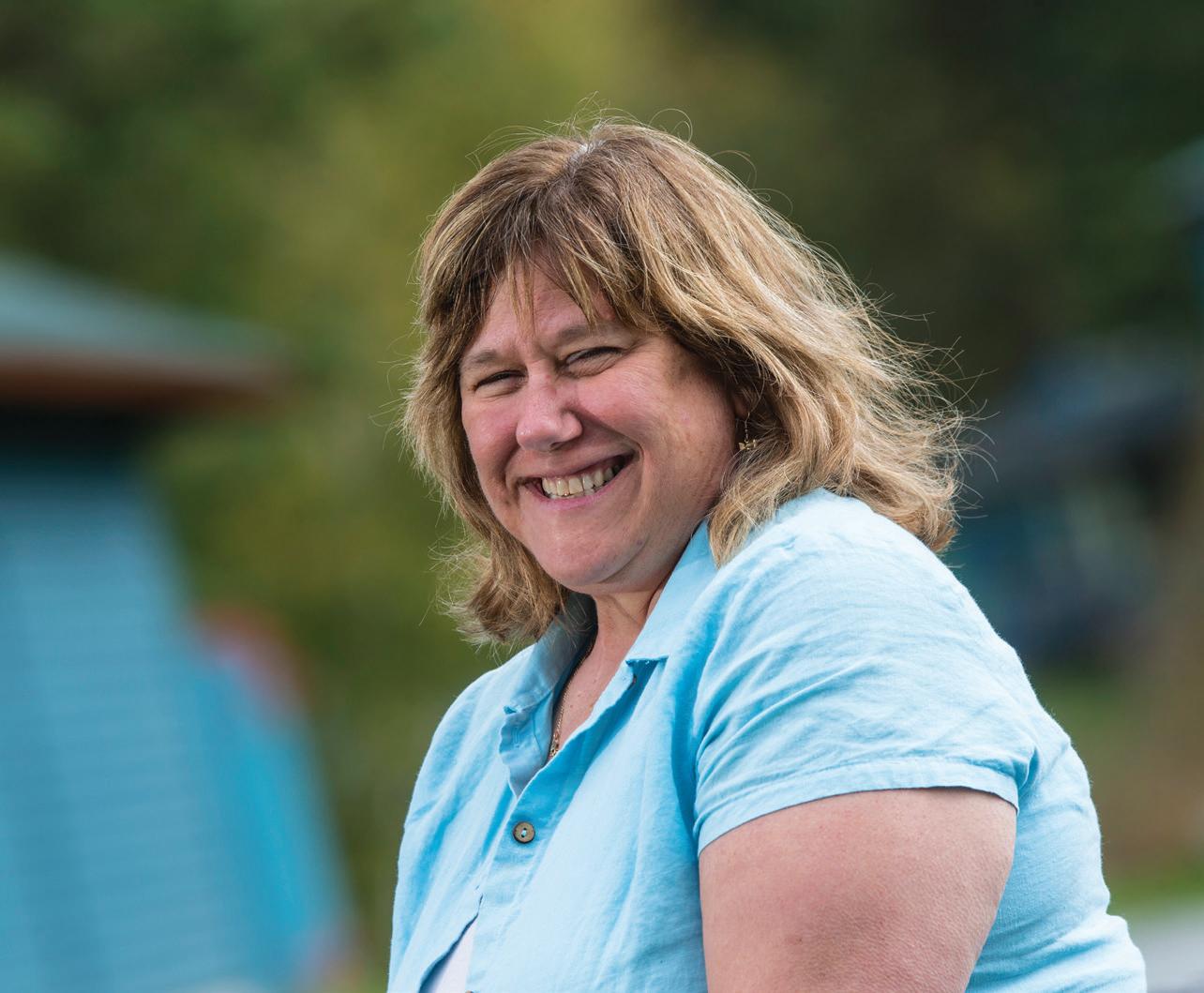
CAMPTREETOPS.ORG I NORTHCOUNTRYSCHOOL.ORG 45
NCS ALUMNI/AE
1965
Peter A. Thacher
(Also, CTT 61)
After 42 years of working for Aramco, my wife, Sarah, and I have retired to The Woodlands, TX. We are also building a garage with an overhead apartment and restoring a 1930 house on a small island off the coast of Maine in the Penobscot Bay.
1968
Peter Willcox
Peter and his wife came to tour the NCS/CTT composter in April with the hope of building one where they live in Maine.

1969
Ruth Butler Harper
(Also, CTT 66) After 41 years of marriage, my husband Dan passed away just shy of his 94th birthday on Christmas Eve, 2018. I have been working as an LPN in a long-term care facility, currently furloughed until COVID subsides and my vaccines kick in, and spending a lot of time with my geographical-
ly-close grandchildren. I moved to West Brattleboro, VT, back in 2015 and am still there. I am currently joined by my middle son and his 200-pound mastiff while he is working hard to save enough money to bring his four kids here from Nebraska to live. My youngest graduated from Vermont Law School last May and is now working at the Vermont Department of Labor as an adjudicator. He has been happily married for four years and hopes to start a family soon. My eldest is currently working as a coordinator for Walgreens’ vaccination program. Her husband of 13 years is a pharmacist at the same company. They have two girls whom I mentioned above. I frequently care for them at their home in Chesterfield, NH. I now have four “great-grands,” but they are out in California and I’ve only seen them one time. My older stepson passed away in 2017 and the other stepson and his wife are out in Fort Bragg, CA. I sure hope to see them soon. My brother, Colin, also lives in Brattleboro, but he travels a lot, so I do not see him that
often. NCS and Camp Treetops are always in my thoughts. It is hard to believe it has been just over 50 years since I graduated! Getting old is not that easy! Hello to all.
1970
Nick Hewitt
(Also, trustee 14–present, CTT 64, Balanced Rocks Circle)
My wife, Ruth, and I had a great trip to Alta Lodge, UT, this year with several other NCS alumni including Meimei Ma (NCS 70, parent 13–16) and Bill Savage (NCS 67)

Mimi Muray-Levitt (NCS 57, parent 66–70, CTT 51–53, Balanced Rocks Circle) was, as usual, a wonderful host. We all enjoyed a lovely dinner together.
1991
Margaret Rhoads
I have a three-year-old boy and gave birth to twin boys in April 2020. I am a consultant in pediatrics to the National Health Service and am living outside London, England.
46 ORGANIC ROOTS I SUMMER 2021 NEWS & NOTES
Peter Willcox
Nick Hewitt
2011
Anna Brewer
I am currently living and working in Portland, ME, as a community organizer with the social security agency Preble Street. My work focuses on addressing homelessness and poverty in Portland and throughout Maine.
2013
Diego Davila
(Also, CTT staff 17)
My experience as a student at NCS was magical. I made many friends and discovered my passion, which is currently my career. I picked up the guitar in my Level 4 (eighthgrade) year. The other musicians back in the year 2012–2013 were always playing contemporary music, while I focused on classic rock bands like Led Zeppelin, AC/ DC, Black Sabbath, Guns N Roses, Motley Crue, and more. During my time at NCS, I was part of the Jug Band and Play Band directed by John Doan. I was an avid snowboarder at NCS as well as a hockey

player. After I graduated from NCS, I went to New Hampton School and then Maplebrook School in Amenia, NY, where I developed my skills as a musician. I was then accepted for one semester at Berklee College of Music, where I further improved my skills. I was then accepted to Musicians Institute in Los Angeles, but decided to hold off until I received an Associate’s Degree in arts from Mitchell College in New London, CT. Before my last year at Mitchell College, I was invited to play at a summer music retreat, where I spent the week playing acoustic guitar and harmonica in West Virginia with Delta Blues legends like Lightning Wells, Phil Wiggins, SunPie Barnes, and many more. In my music career, I have had the pleasure and honor of meeting famous artists such as Lionel Richie, Buddy Guy, John Schofield, Billy Sheehan, Tom Petty, and many more. I am currently attending Berklee College of Music pursuing a Bachelor’s in Music Production/Engineering. I release
and produce music from my studio in Miami, FL, where I play in bands that range from rock, blues, metal, R&B, rap, southern rock, and more. After receiving my Bachelor’s in Music Production/Engineering, I have been offered a spot at Musicians Institute in Los Angeles, where I will be studying for a Master’s in Record Management, as well as playing in established bands around Los Angeles looking to become well-known, and possibly tour the world someday!
2014 Anabell Corwin
(Also, CTT 07)
My partner, Patrich Leduc, and I welcomed Rayne Patrich Corwin on Feb 17, 2021 in Saranac Lake, NY.
Four
Kimberly Corwin-Gray (NCS 95, parent 08–14, 20–present, staff 04–15, CTT 89–98, parent 07), River Gray (NCS current student), Anabell Corwin, Rayne Corwin (future NCS class of 2036), and Tony Corwin (NCS 68, staff 92–96, parent 91–02, grandparent 20–present, CTT 64, parent, grandparent)

CAMPTREETOPS.ORG I NORTHCOUNTRYSCHOOL.ORG 47
NEWS & NOTES
generations of the Corwin family (left to right):
Diego Davila
CTT FRIENDS
Shelah Scott
CTT 42–43, staff 50, parent 72–73
I am thrilled my granddaughter is coming to camp this year. I was a camper for two years in the 40s and a counselor in 1950.
Marli Low Hinckley
CTT 55
I’m enjoying the sailing skills I learned at Treetops all those halcyon days ago.

Dr. Shiu-Kai Chin
CTT 64–66, staff 72–74
Best wishes to all teachers, staff, and students at NCS/CTT. 2020 was grueling with the twin pandemics of COVID and ongoing systemic racism. I am finishing 35 years at Syracuse University in 2021 as a professor in trustworthy systems, security, and mission assurance.
Matt Boykin
CTT 91–92
Matt, who graduated with a Bach-
elor of Science from Miami of Ohio and a Master of Accounting from Florida Atlantic University, is a Certified Public Accountant in Florida and currently a director of Next Era Energy. Matt also holds public office as the President of the Northern Palm Beach County Improvement District. Last month, he was elected to his third four-year term. Matt was first elected in 2008, and at that time was one of the youngest elected public officials in Florida. Matt is married to his college sweetheart, Kristy, and they have two children, Benny (8) and Johnny (5). Matt lives in Jupiter, Florida.
Jonathan Steffy
CTT 91–92
Jon and his wife, Maggie, moved to Petoskey, MI, in 2018 after 13 years in Chicago. They practice law and have two daughters, ages 3 and 5.
Ari Epstein
CTT 93–97
Ari, motivated in no small part by the values imparted at Treetops, helped to launch a new charitable organization, the Adirondack Wilderness Advocates. He leads the group’s effort to build and pilot a new visitor use management tool in summer 2021. By day, he serves as the New York State Department of State’s chief data officer. Ari married Rima Shamieh in 2008. They reside in Schenectady, where they are weathering the pandemic by trying to get outside each day with their little ones, Tullia (6) and Avi (3).
Treetops 1980s
Several former campers from the 1980s gathered via Zoom in early March to reminisce, reflect, and share.
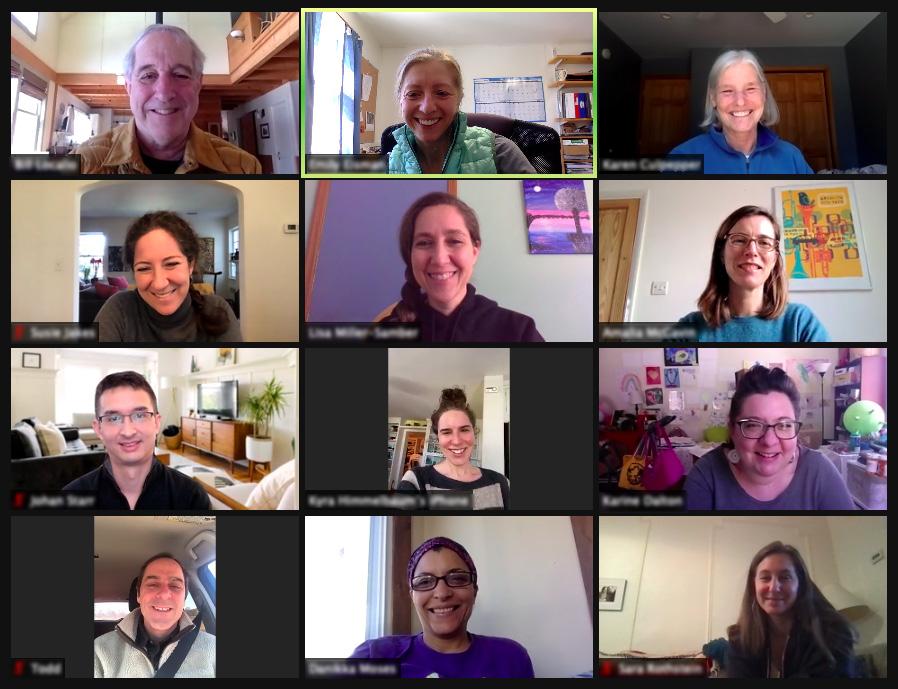
Katie Culpepper
CTT 92–99, CTT staff 02–09, 11–14, 19–present, NCS staff 8–10, 11–17
On winter solstice, longtime community members Katie Culpepper and Greg Katz (CTT 00–01, CTT staff 05–12, NCS faculty/staff 08–09, 12) were married in the woods on their Jay
48 ORGANIC ROOTS I SUMMER 2021
NEWS & NOTES
Marli Low Hinckley
Camp Treetops 1980s Zoom call
property in the presence of their parents, which include Camp Director Karen Culpepper and Director of Facilities and Sustainability John Culpepper (NCS-CTT Garden Manager 1990–1993, CTT camp parent 1990–2003, CTT Special Projects Coordinator 1994–2003, NCS parent 1992–1993, Director of Facilities and Sustainability 2004-present). Camp friends Zach Siegel (CTT 03–07, CTT Staff 10–13, 15) and Lily Gordon (CTT 02–07, CTT Staff 10–15) acted as officiants.
Stefan Nowicki
Trustee 18–present, CTT 87–91, 93, CTT staff 97–03, 06, 11 Stefan and Courtney were overjoyed to welcome Isla Faye Nowicki to their family on November 1, 2020. She is already preparing for her first summer as a camper.
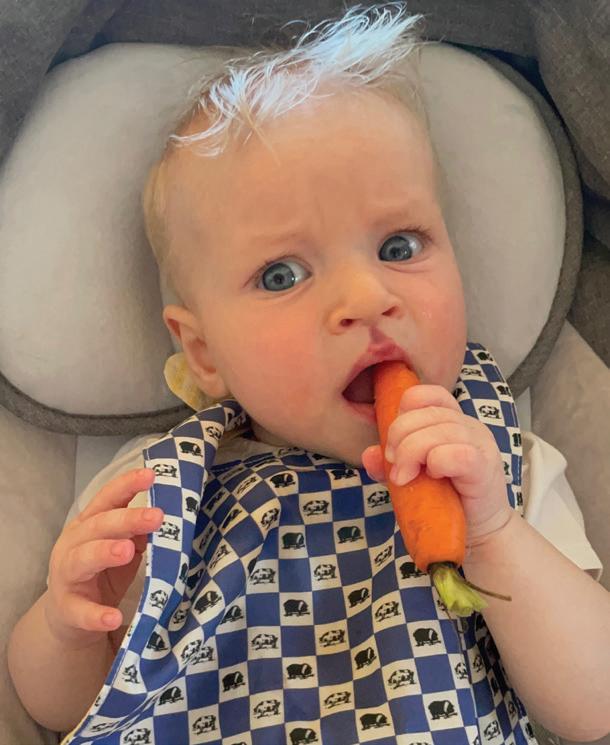
FACULTY/STAFF
Director of Facilities and Sustainability John Culpepper has decided to take his love for composting to the next level by starting an initiative called Compost for Good. Together with co-founders Katie Culpepper
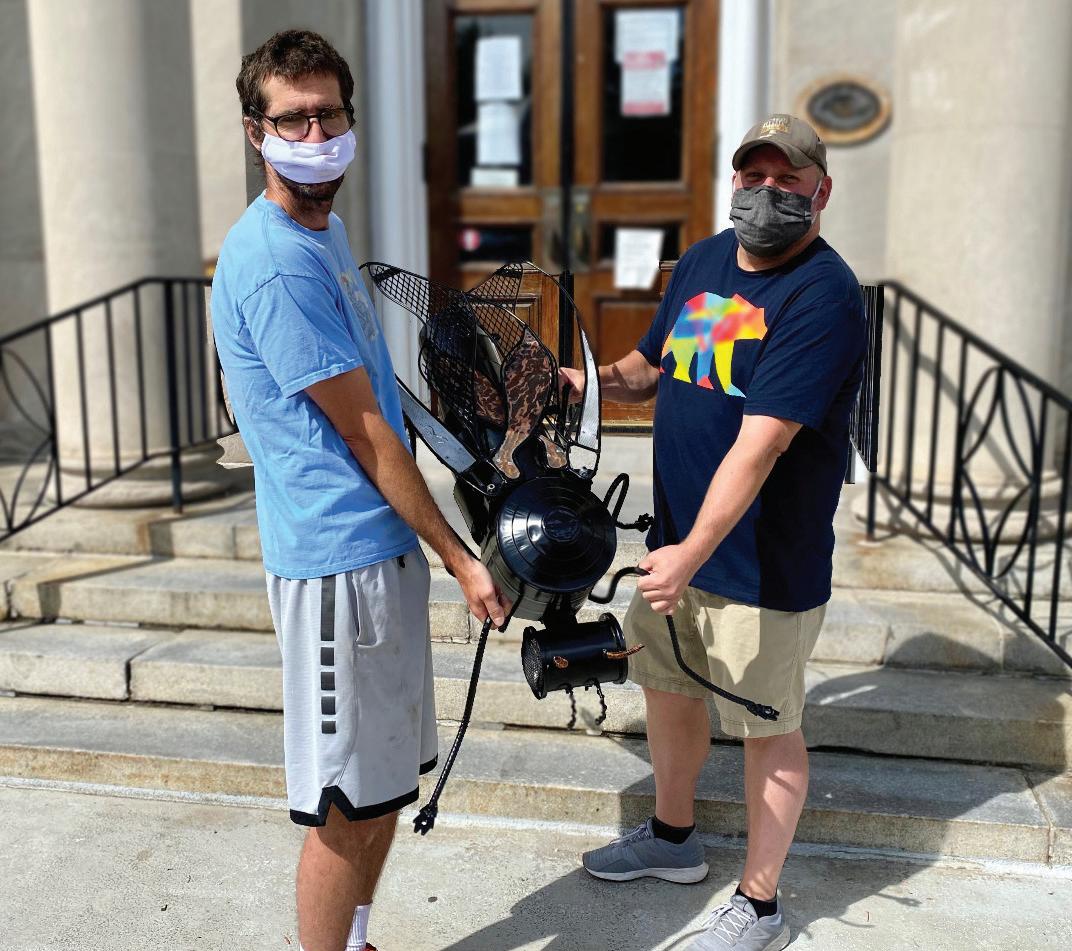

and Jennifer Perry, the trio partnered with AdkAction, an Adirondack not-for-profit organization. Compost for Good’s goal is to help communities all around the world to reimagine their waste, turning organics into a valuable resource. If you are interested in learning
more about this organization, simply search for Compost for Good. You can also find us on Facebook.
Meredith Hanson (NCS faculty 12–present) presented at the online NYSAIS Global Language and Culture Conference in May through her work with Concordia Language Villages.
Larry Robjent (CTT parent 16–19, NCS parent 18–21, faculty 2000–present) created nine bug sculptures out of donated scrap metal for a new art installation in nearby Saranac Lake called the Saranac Lake Bug Crawl. The colorful sculptures are anatomically accurate to their living counterparts, and were installed in parks throughout the village’s downtown.
CAMPTREETOPS.ORG I NORTHCOUNTRYSCHOOL.ORG 49
& NOTES
NEWS
Larry Robjent, left, gives the black fly sculpture he created to Saranac Lake business owner Adam Harris.
Katie Culpepper and Greg Katz
Isla Faye Nowicki
Student Voices
FIRST TURNS:
INTERSESSION
2021
By Joel Oke NCS sixth-grader
I was tired, out of breath, and cold as I cruised down the mountain, weaving between trees. I had never tried backcountry snowboarding before, but suddenly there I was, speeding through the woods.
My name is Joel, and I’m a sixth-grade boarding student in my first year at NCS. I’m from New Jersey, where I live with my parents, brothers, and aunt. On campus, I live in Algonquin House. During the Spring Term, I had my first snowboarding adventure thanks to a program called Intersession. One of my favorite times of the year, Intersession is a special week before spring vacation when there aren't any academic classes, so you get a break from all that. It's a time when you can do what you want: you can choose from a lot of Intersession courses, one in the morning and another in the afternoon. Unlike normal classes, you can do chill activities. Some people stay inside and watch historical fiction and historical documentaries, practice band, or play Dungeons & Dragons, where they have fun with the cliffhangers. (Cliffhangers in D & D are suspenseful moments in the role-playing game.)
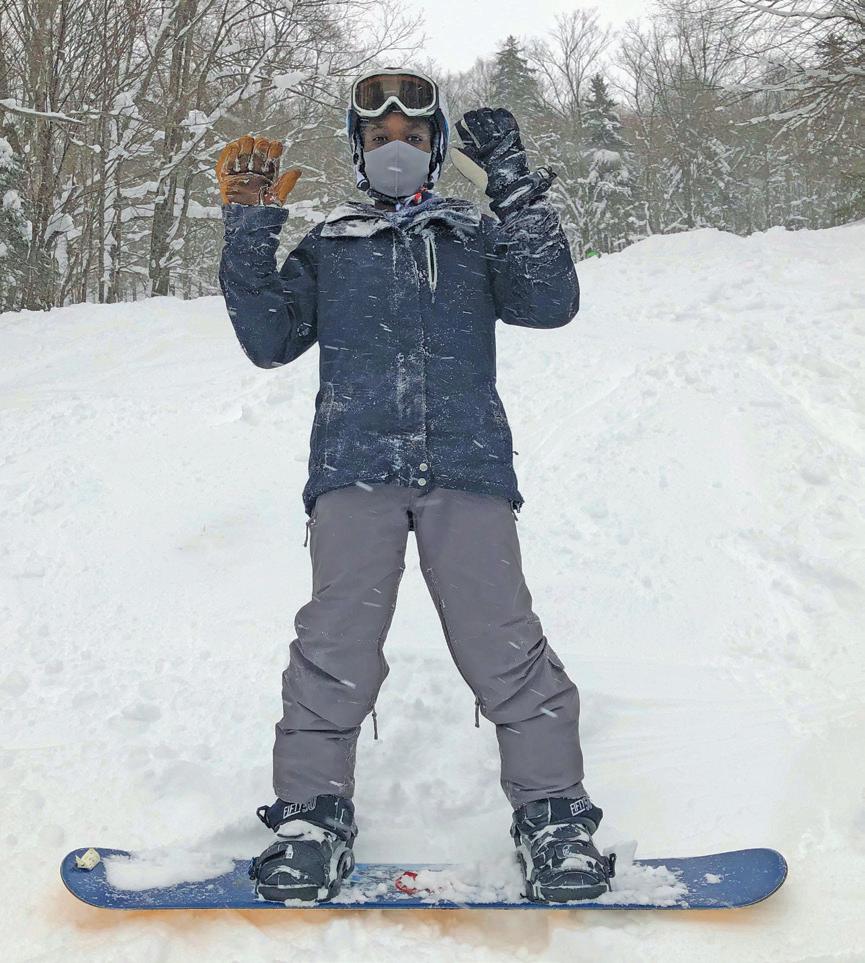
Getting back to the outdoors, my morning Intersession was called Winter Ski Mountaineering in the Backcountry. Unlike skiing on groomed trails, I learned that “backcountry” means climbing up mountains then snowboarding or skiing back down. It's really enjoyable and feels good, but I had to carry 10–20 pounds of gear and wear non-cotton layers, which help keep you warm because they don’t absorb sweat. (Also, if snow were to get on the cotton layer, you would stay cold.) I had to carry my snowboard and that was very TIRING!
During Intersession, I also went to the ski hill on campus. The teachers who led the ski hill activity were Melissa Orzechowski and Katie Woltner; they are both awesome. My teachers in the backcountry were Colin Lohr and Jess Jeffery. They are both amazing instructors and I learned a lot. It was spectacular.
The activities we completed in the backcountry were ice climbing and snowboarding/skiing, and we took a break from the outdoors to watch a movie about rock climbing. We also climbed a mountain—a small one on campus—then snowboarded down it, which was gratifying. I was exhausted right after, but it's always worth it. As they say on the backcountry, you have to work hard to ”earn your turns.”
For the ski hill portion of Intersession, we had fun with our friends; we went up the tow rope and snowboarded or skied down. We also went to Uppers and had an amazing time. Uppers is technically for advanced snowboarders and skiers. Snowboarders have to know how to do turns quickly, and skiers have to know how to do jump turns. Some people got a little hurt from falling on the ski hill, but we all got through it together.
Intersession is a time when you can relax and do stuff that you like. I enjoyed it because I got my first choice of activities. Backcountry and the ski hill were really entertaining for me. You should stop by and check out the ski hill in winter, because it's really interesting and the best, especially if you have friends with you.
50 ORGANIC ROOTS I SUMMER 2021

CAMPTREETOPS.ORG I NORTHCOUNTRYSCHOOL.ORG 51 The Annual Fund provides a foundation that strengthens all that is vital to the camper and student experience. Your support is a testament to the life-changing moments of Camp and School. Please consider generously supporting Camp and School. Make a gift online at www.camptreetops.org/giving or www.northcountryschool.org/giving or contact Emily Eisman at eeisman@ncstreetops.org or (518) 523-9329 x 5450. For generations, Camp Treetops and North Country School have given children space to LEARN, GROW, AND PLAY.

Camp Treetops North Country School
4382 Cascade Road, Lake Placid, NY 12946




 By Karen Culpepper Camp Director
By Karen Culpepper Camp Director





























































































